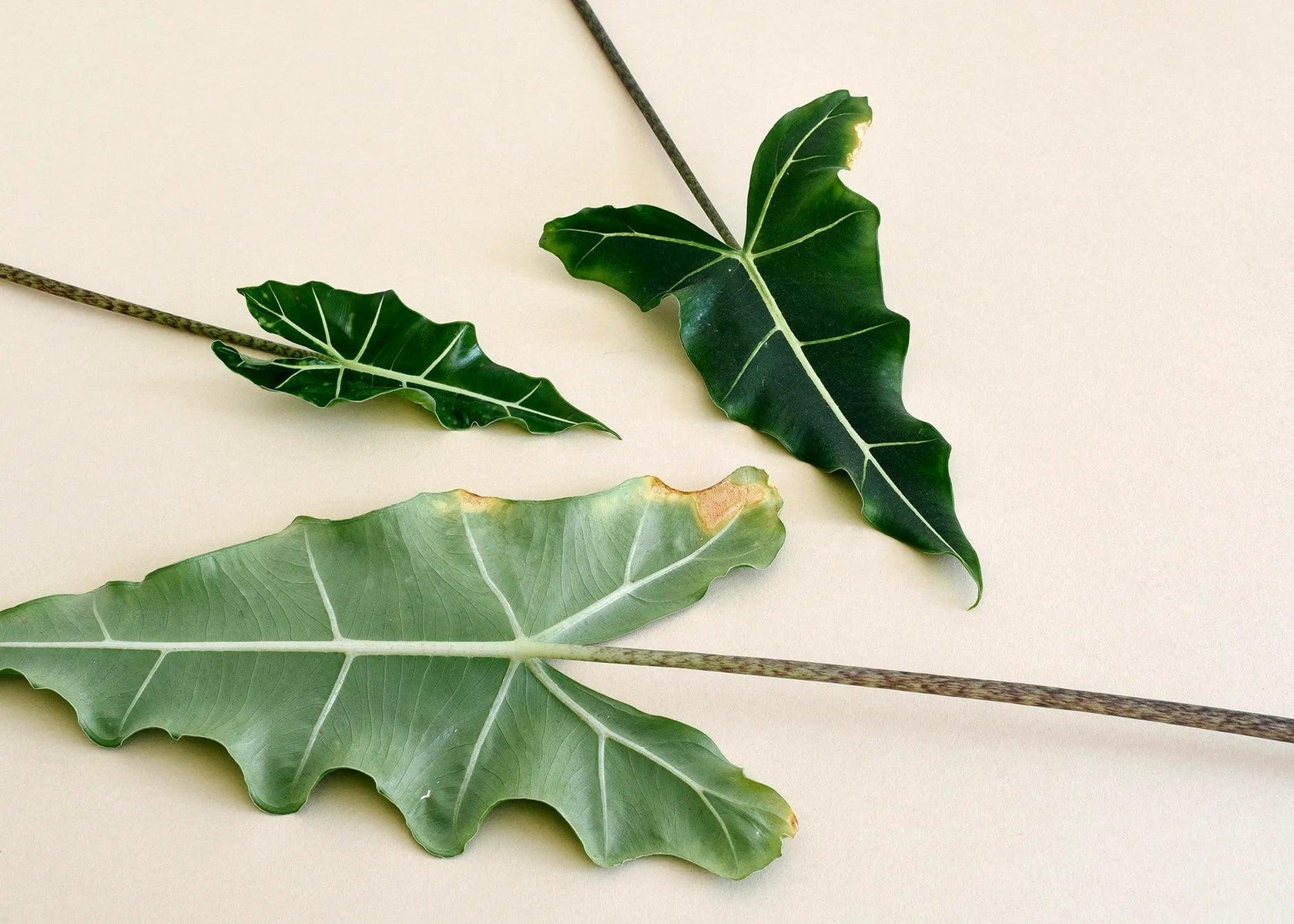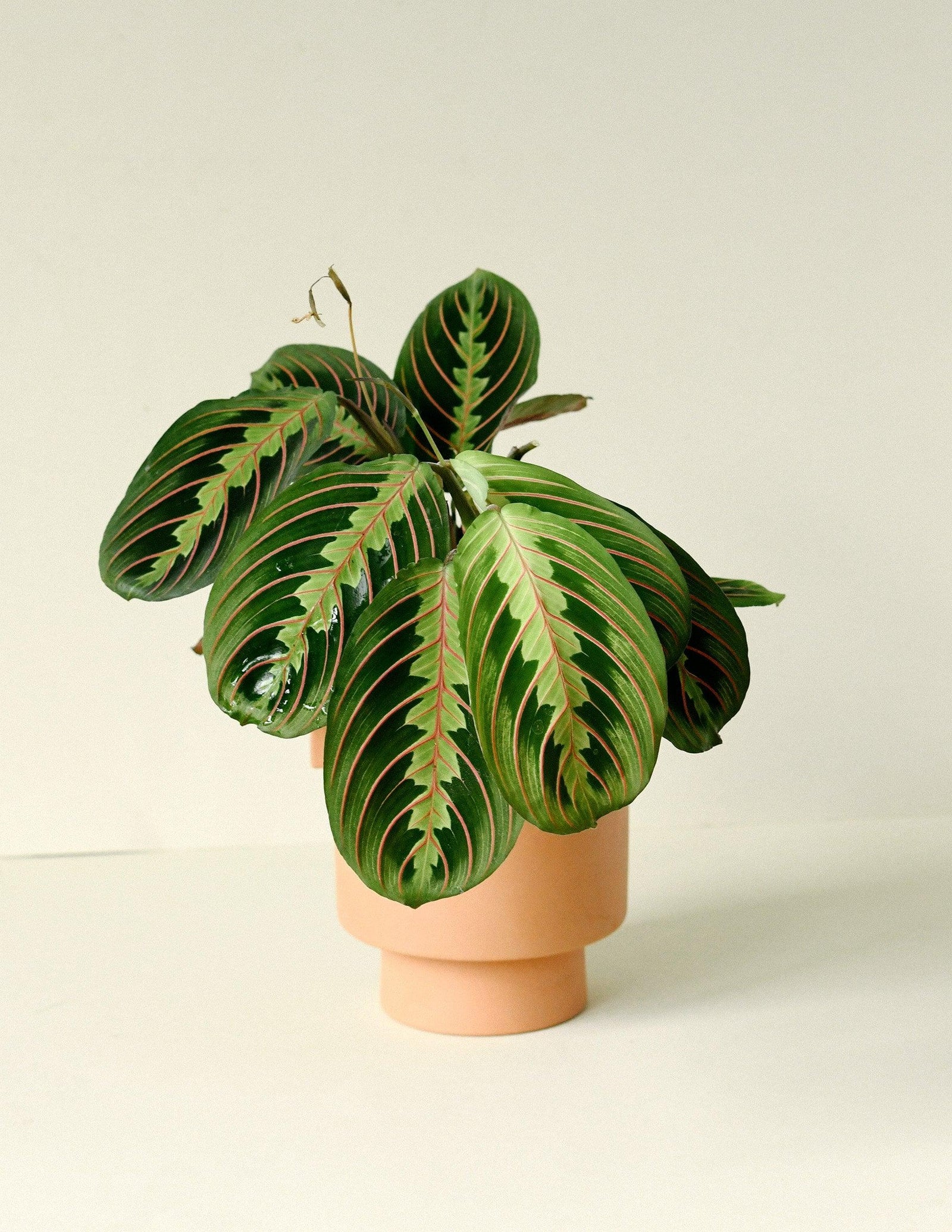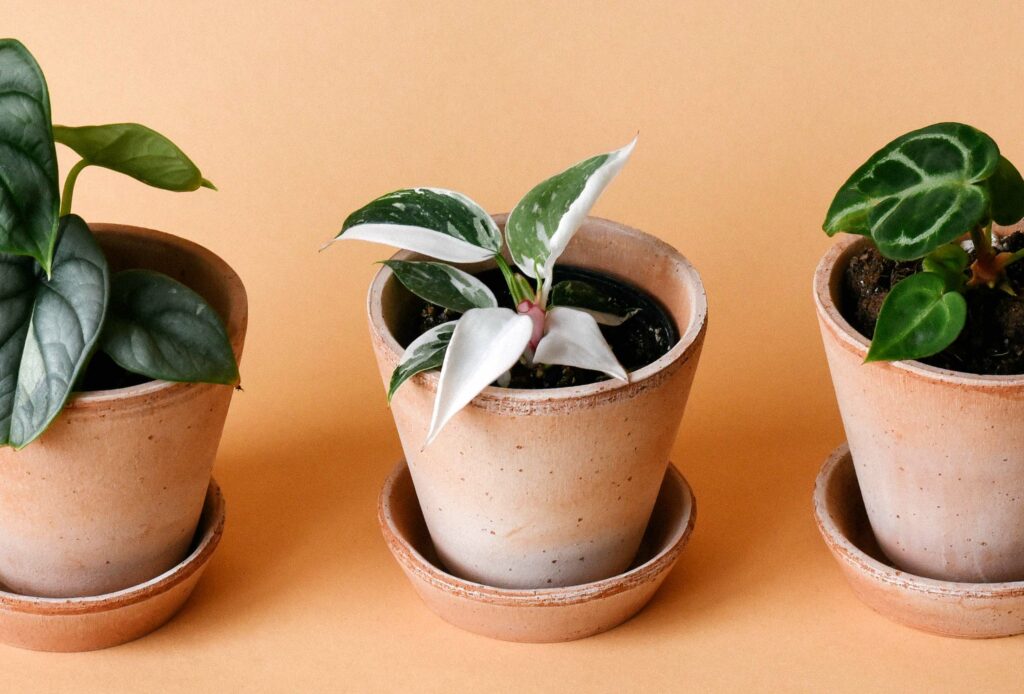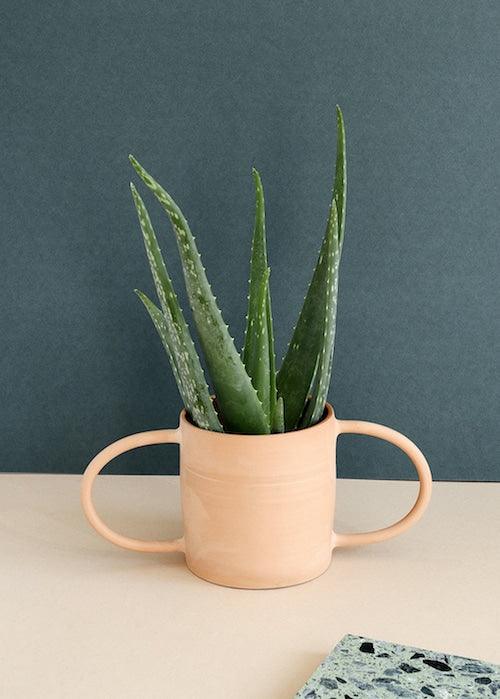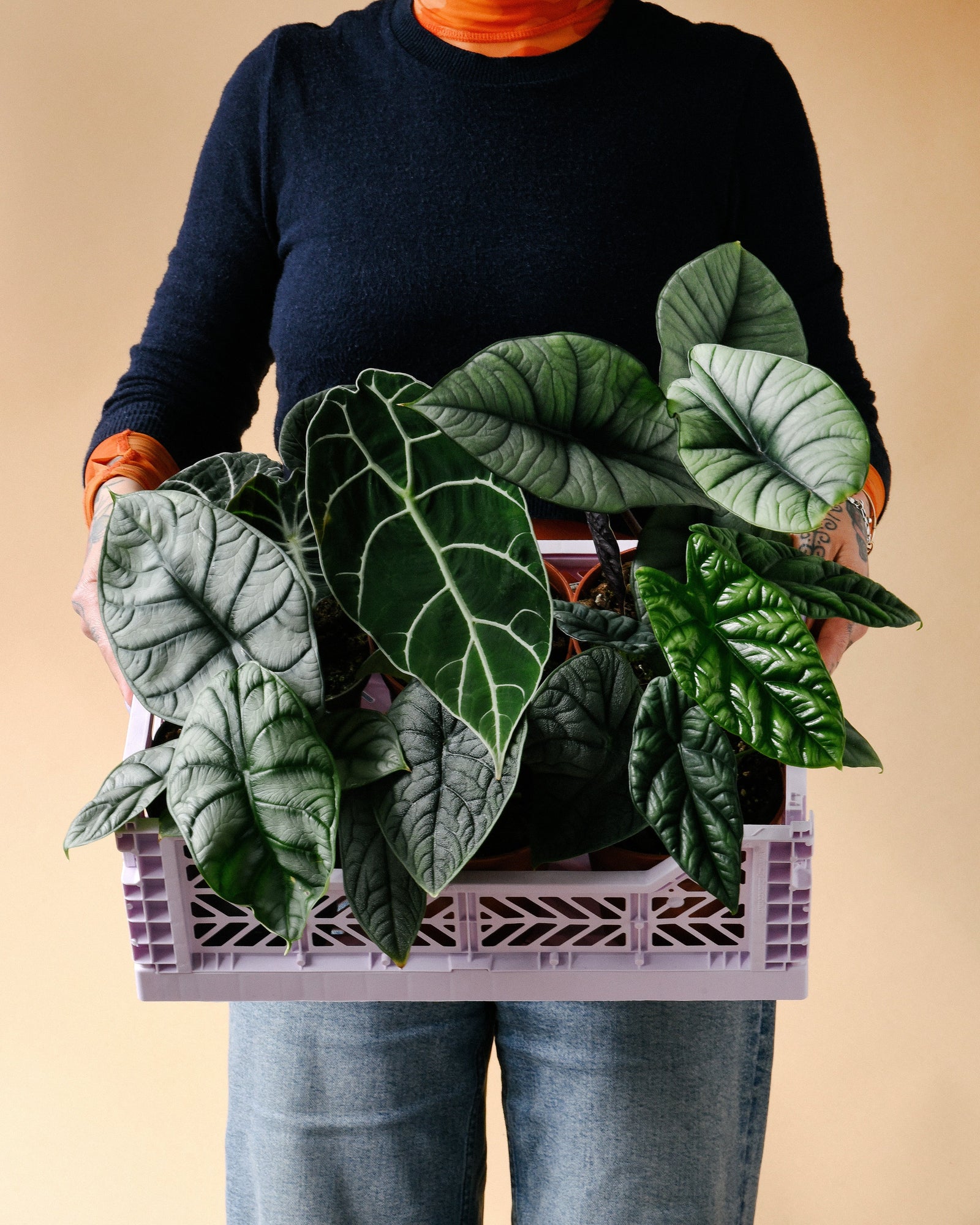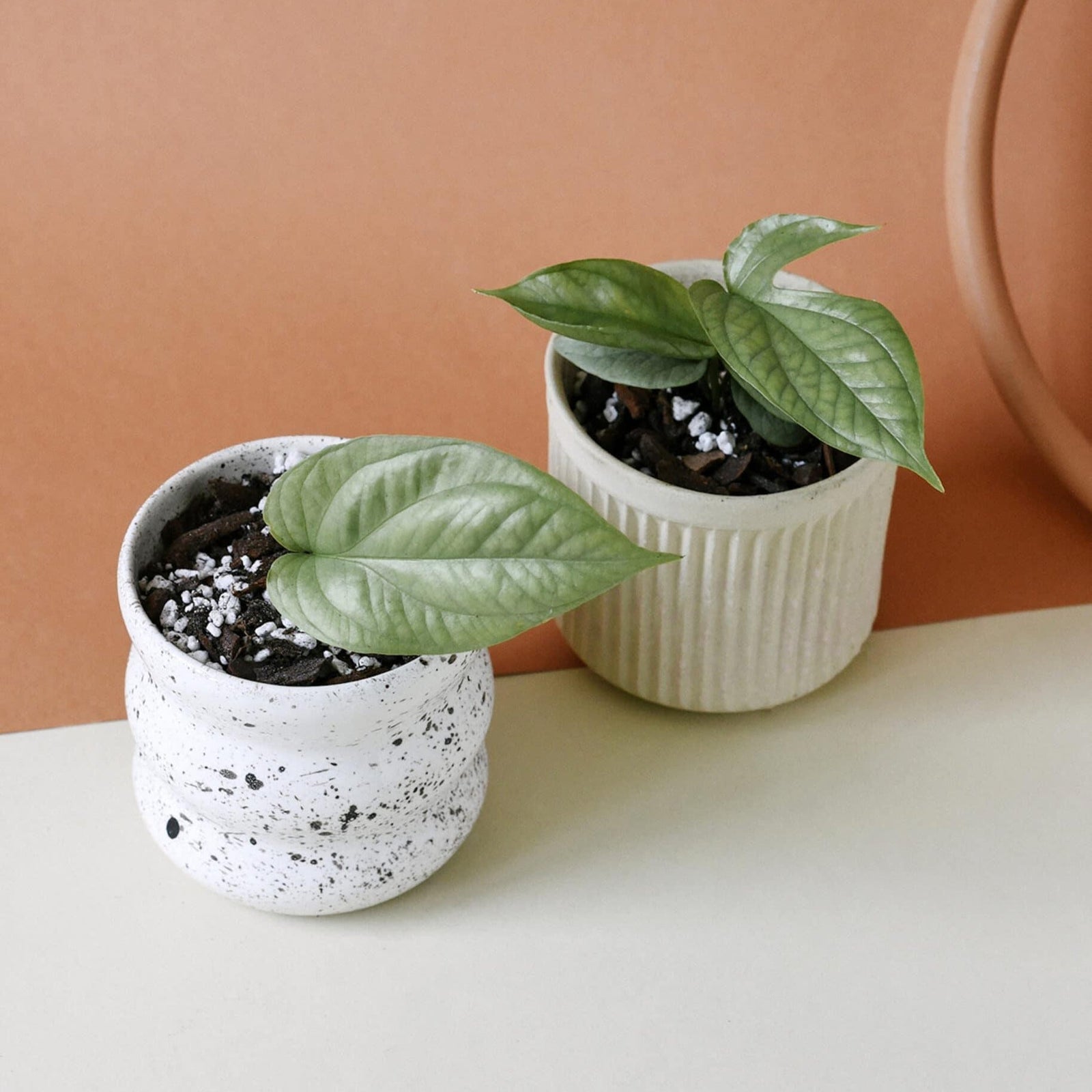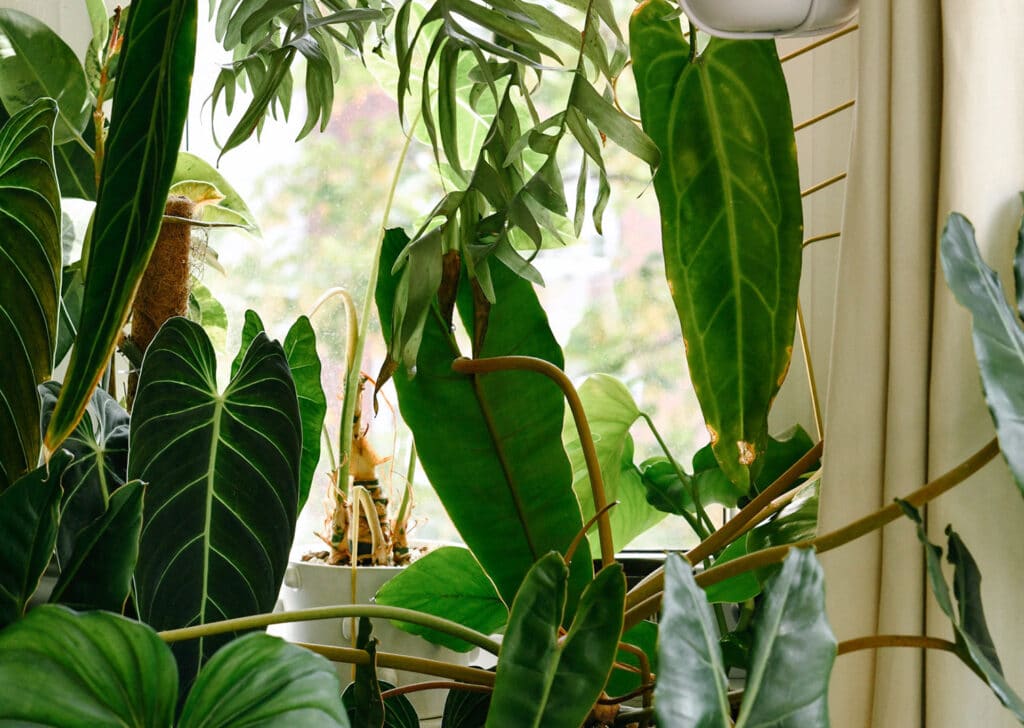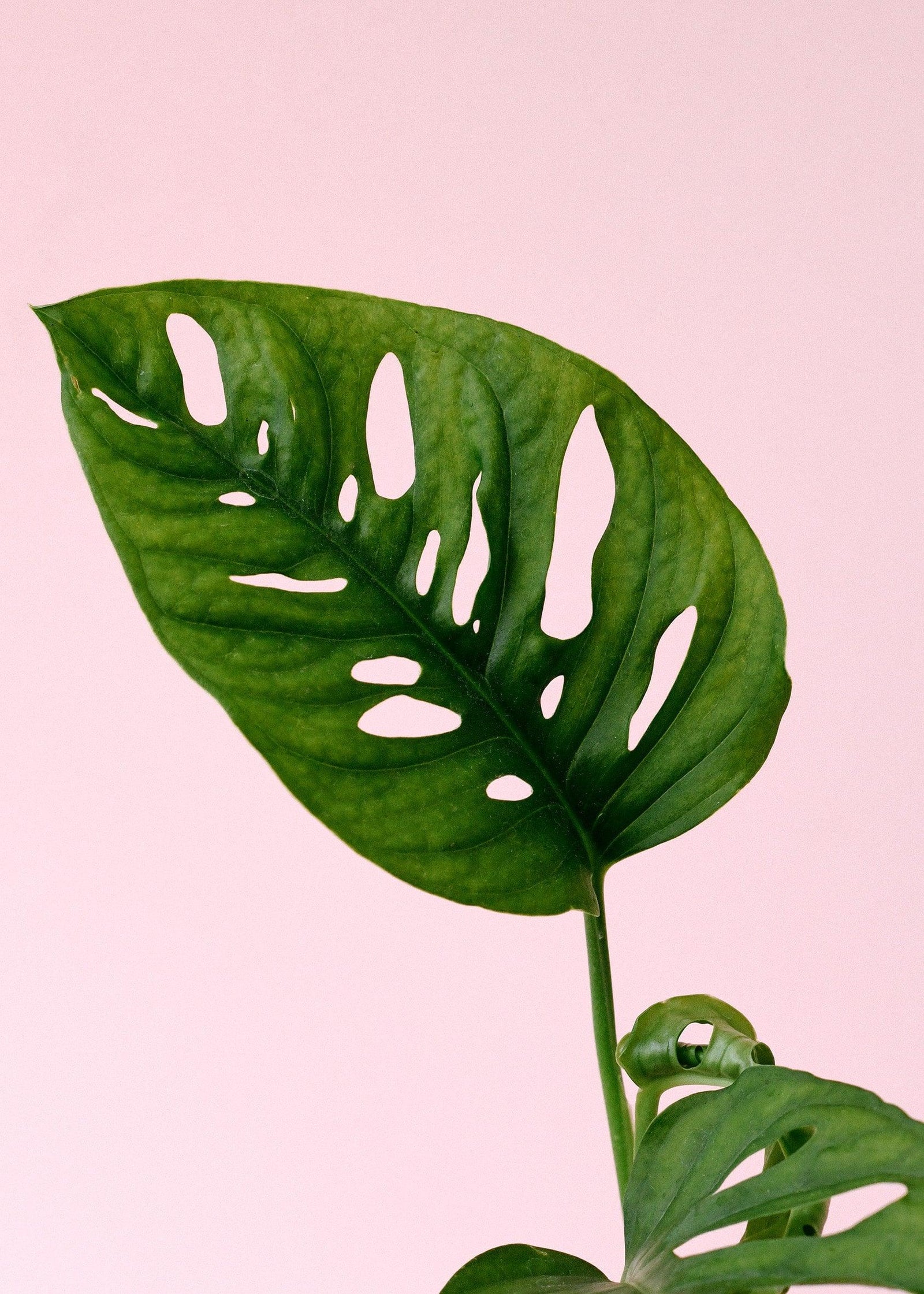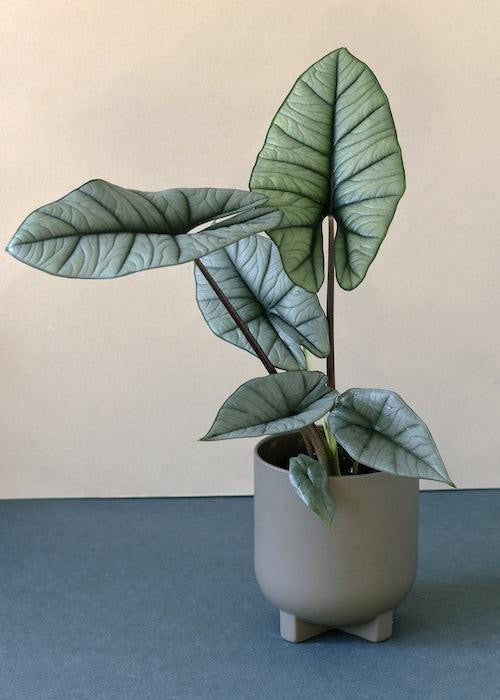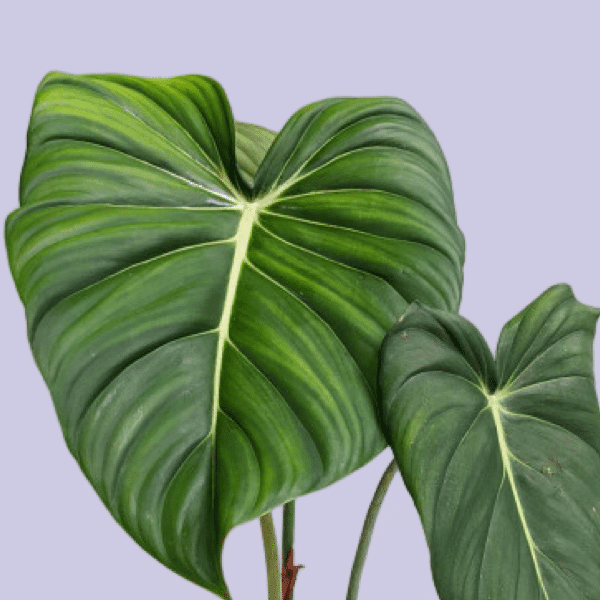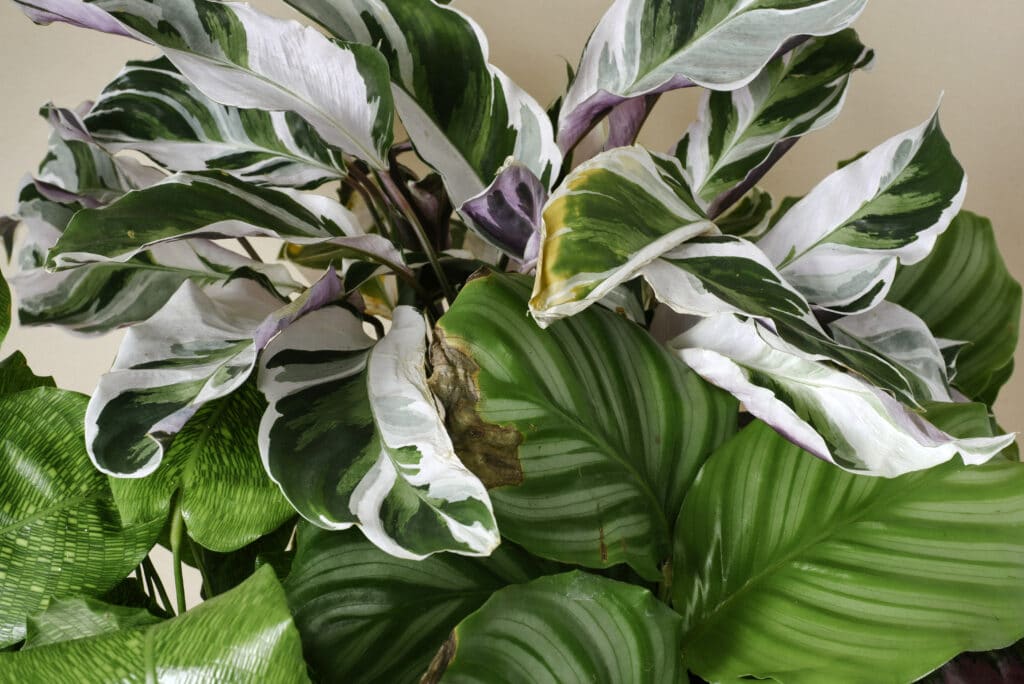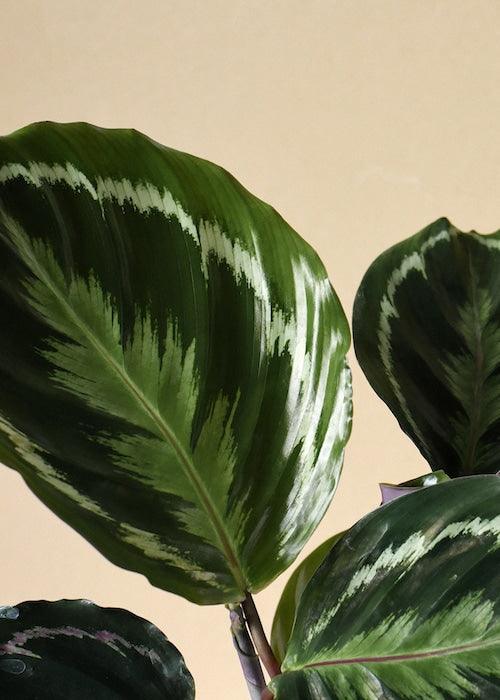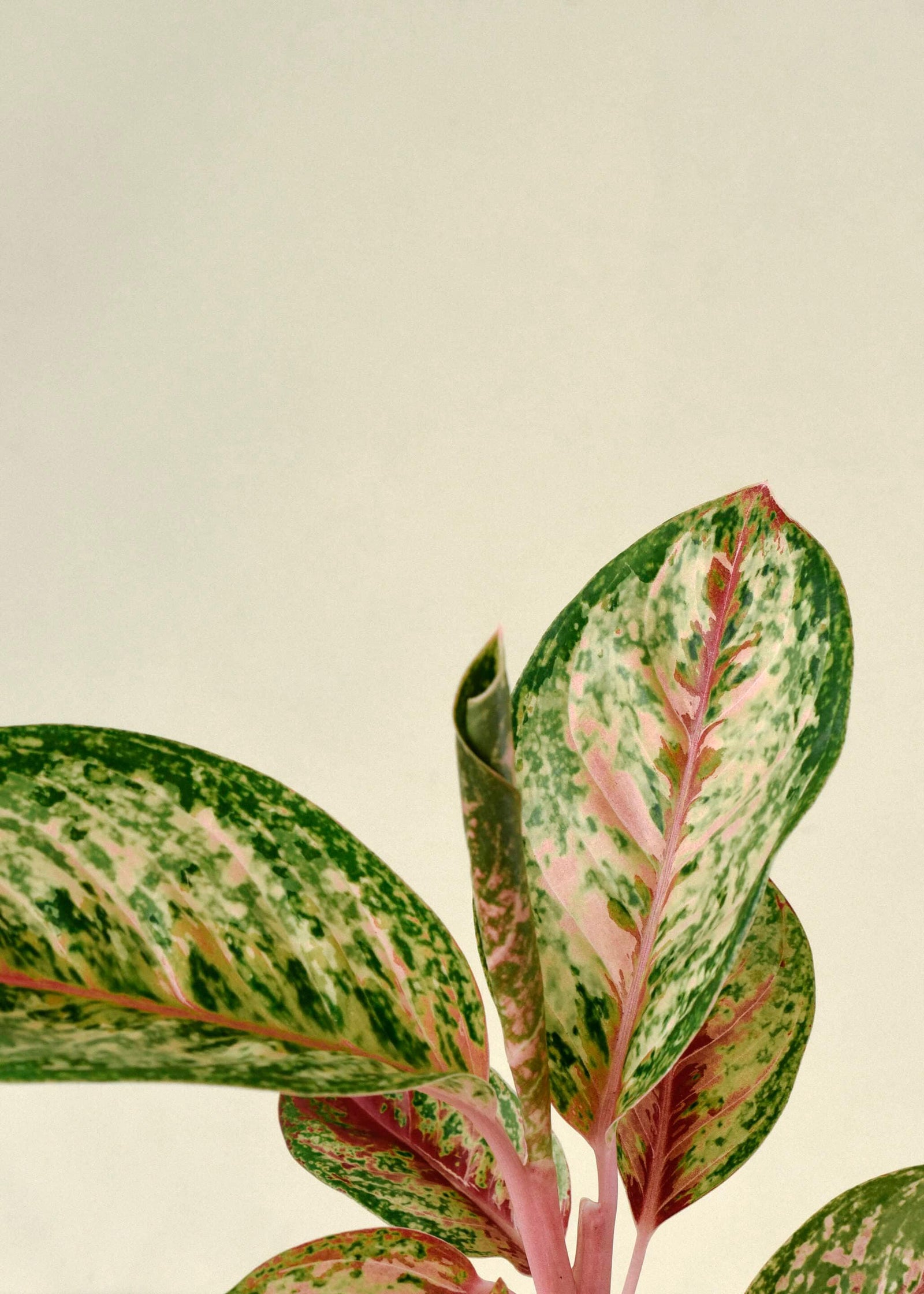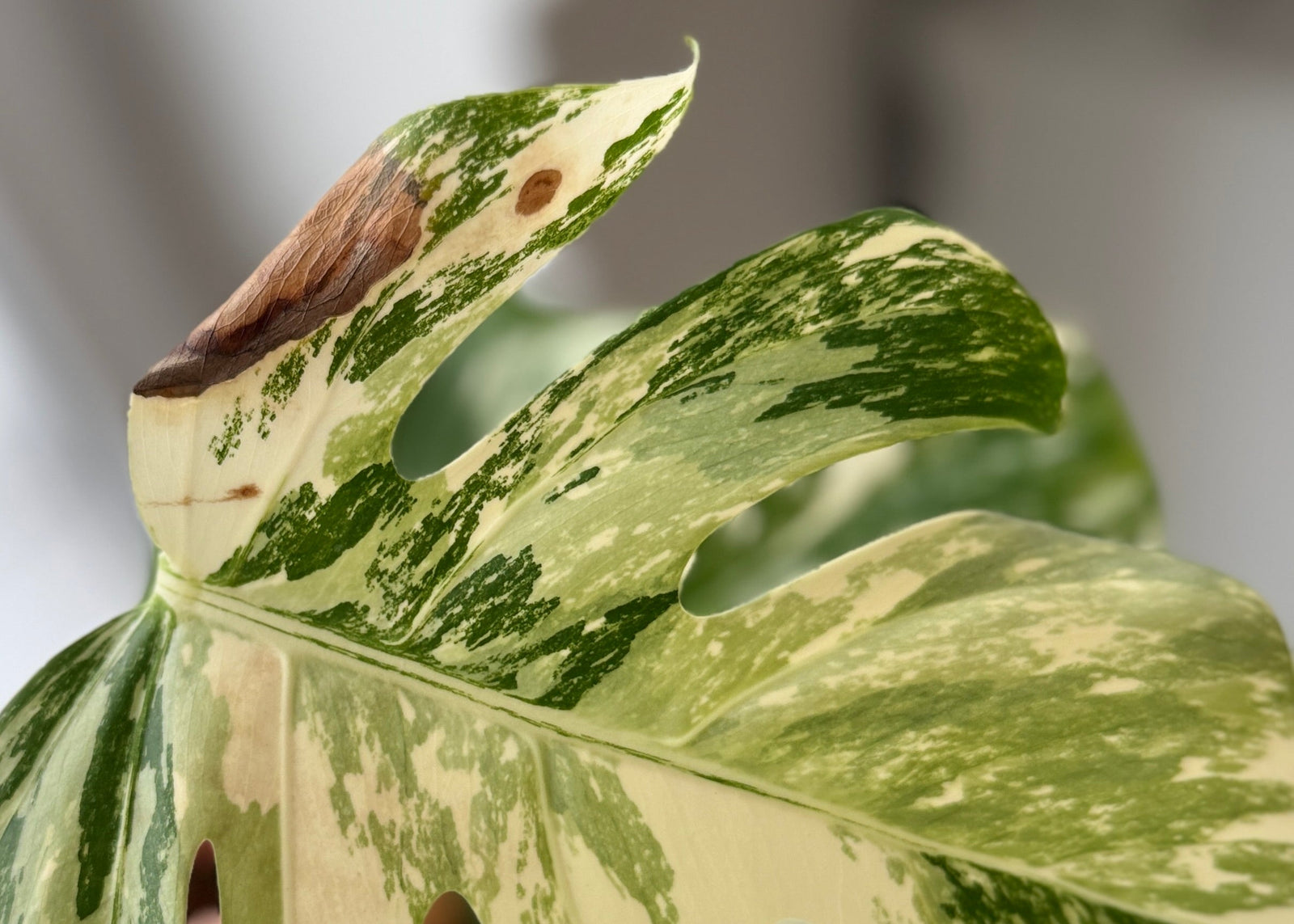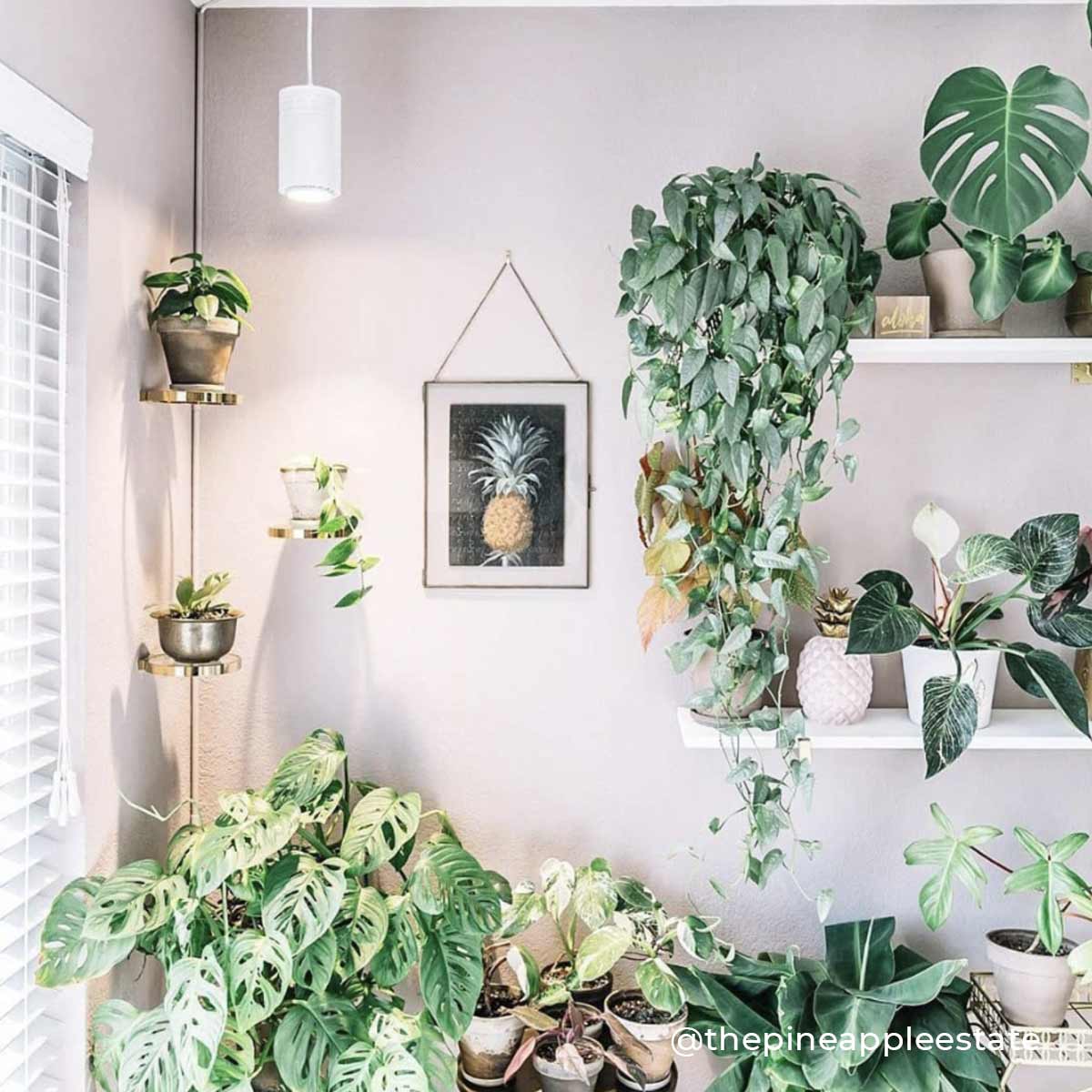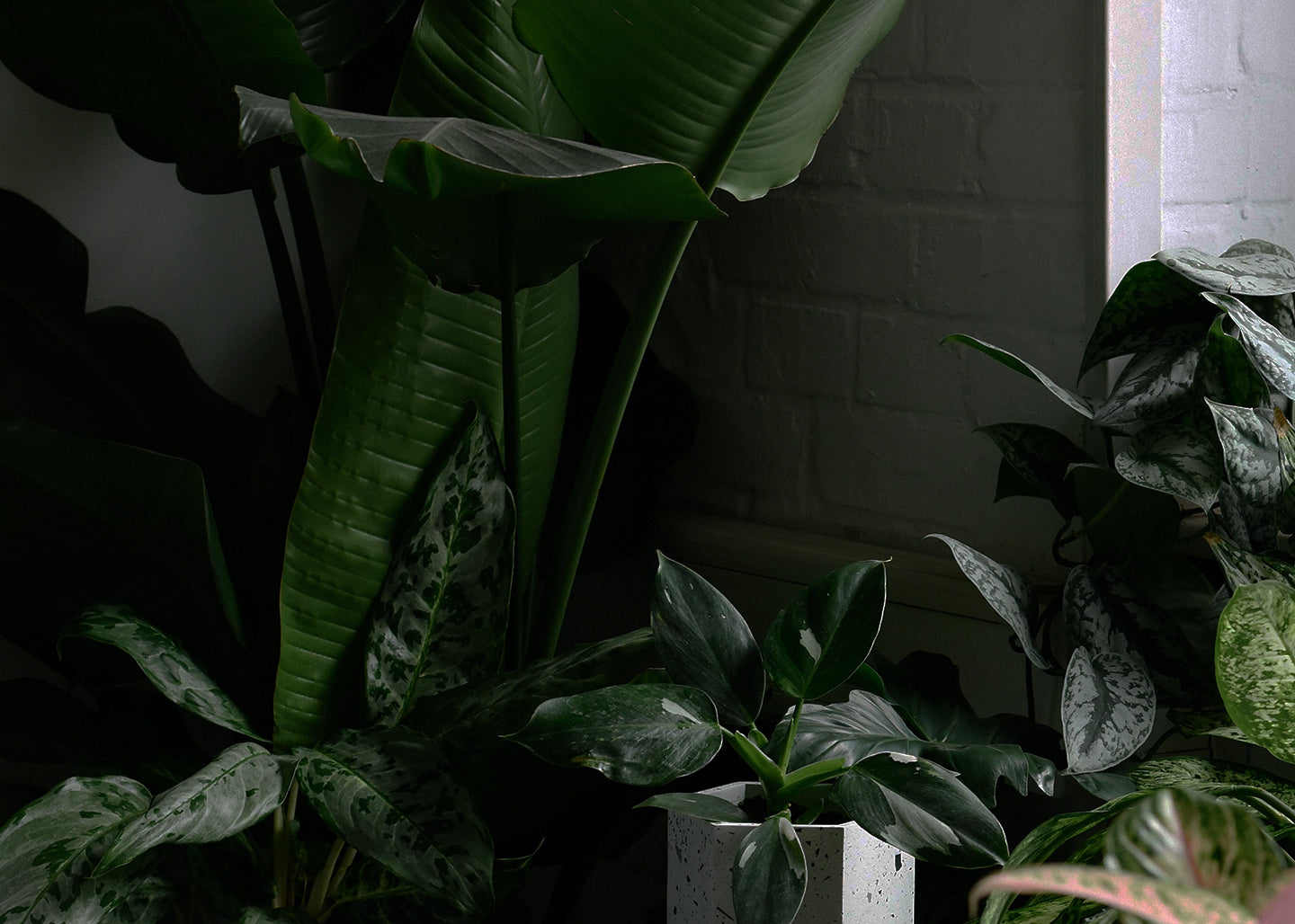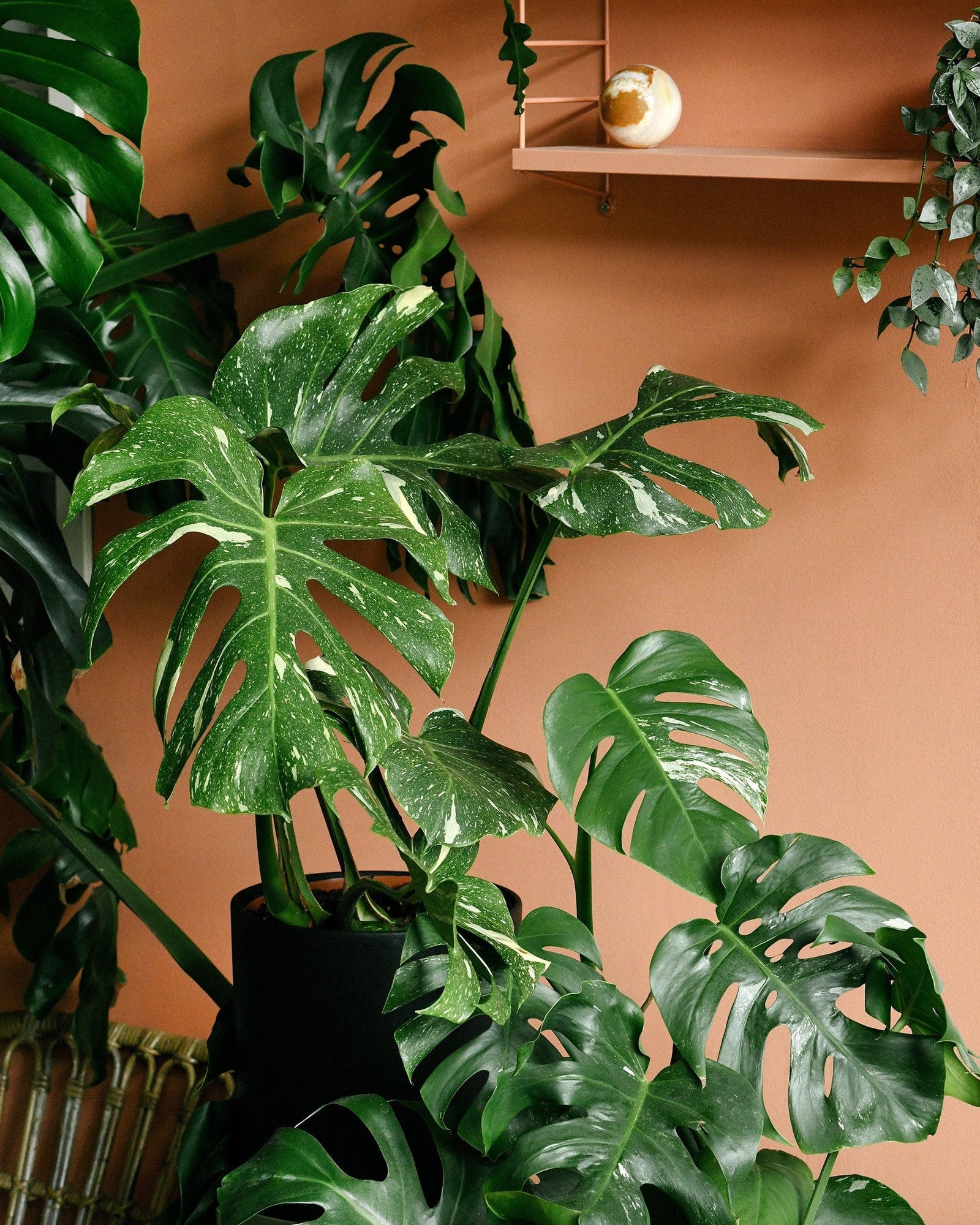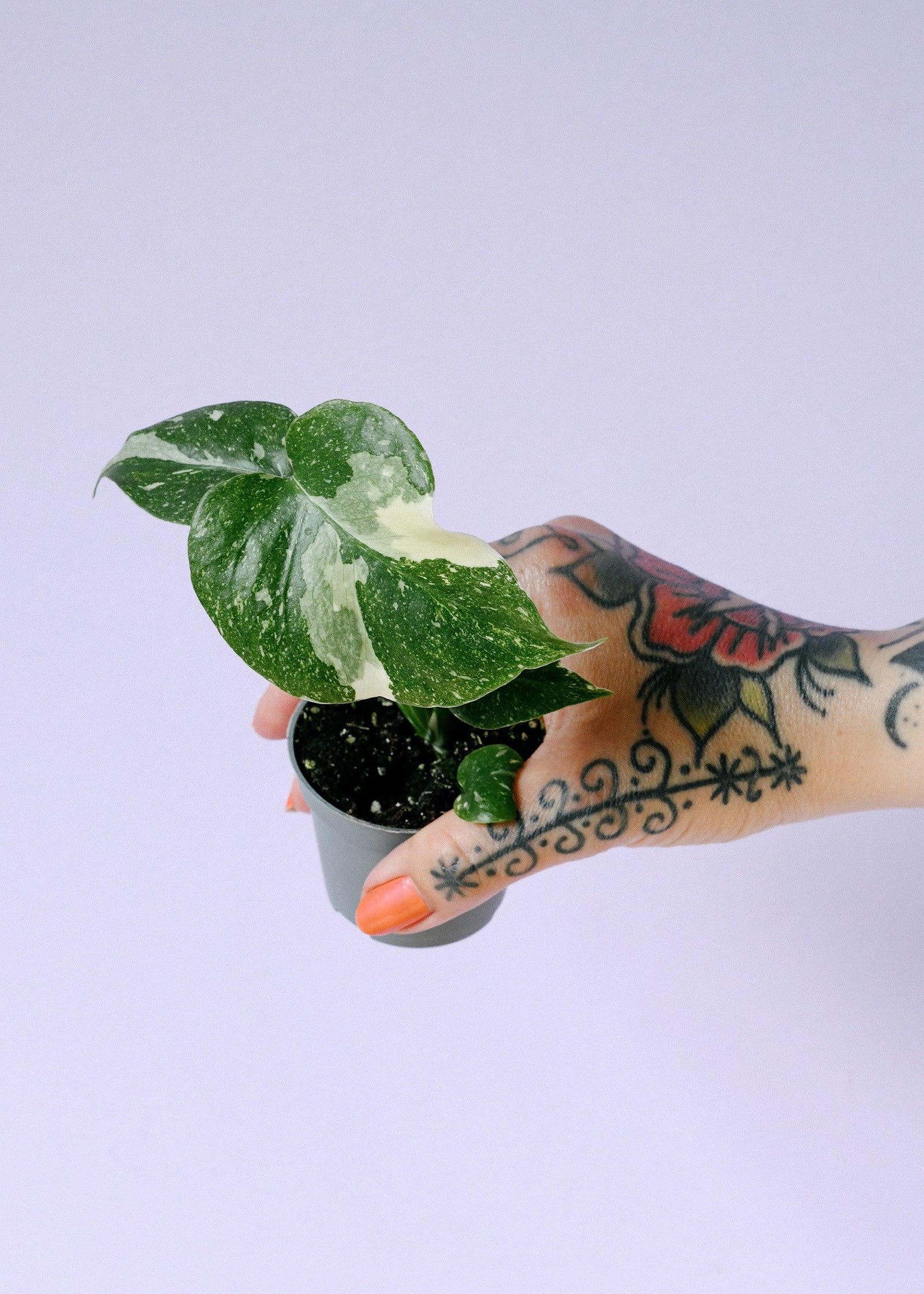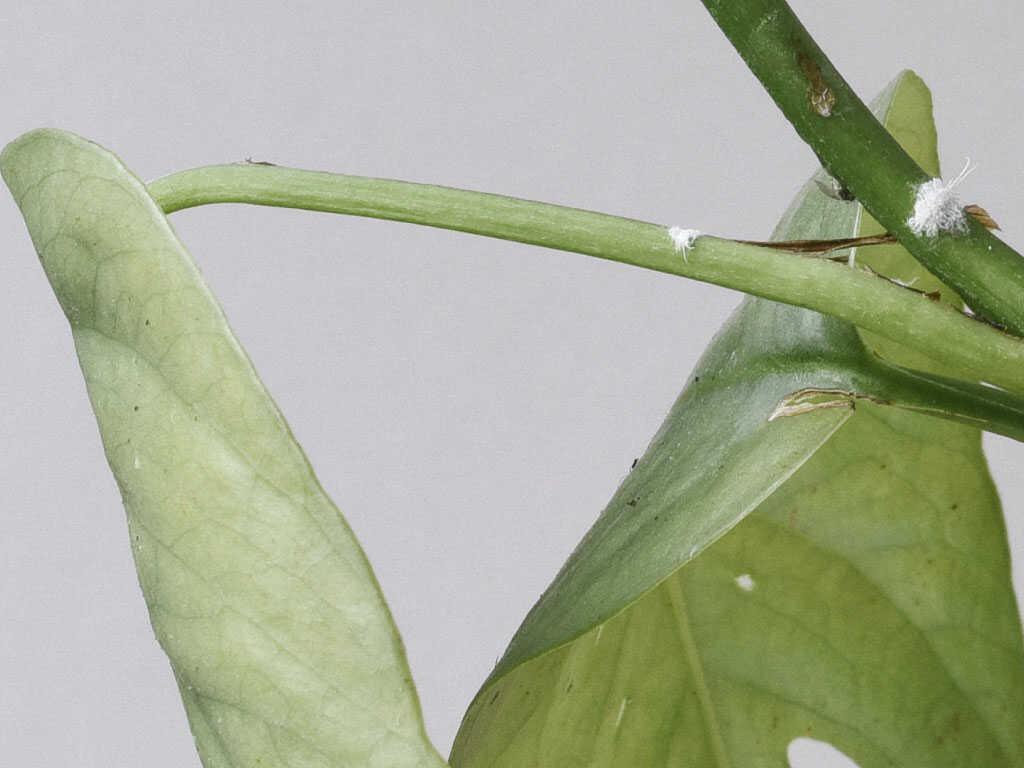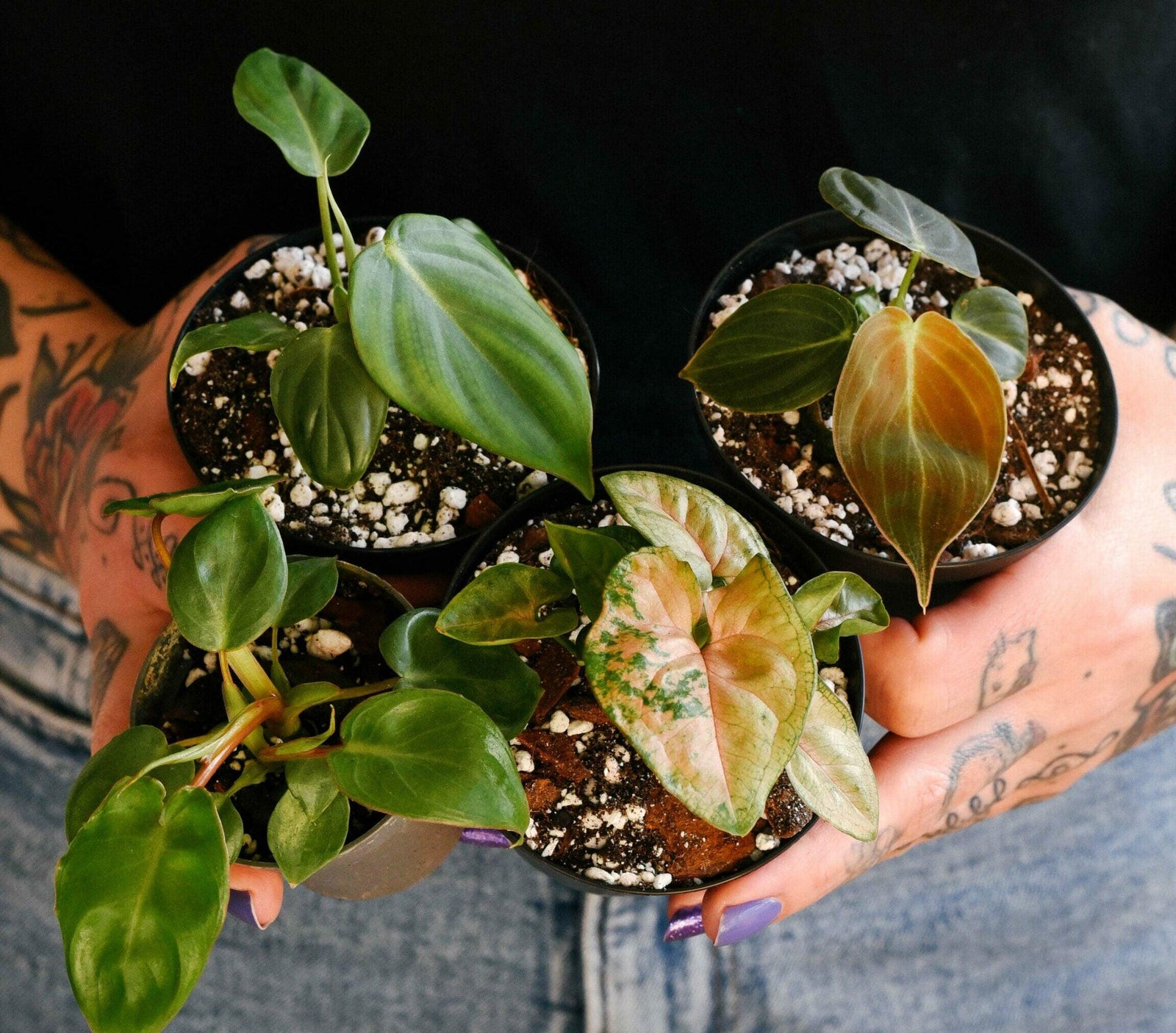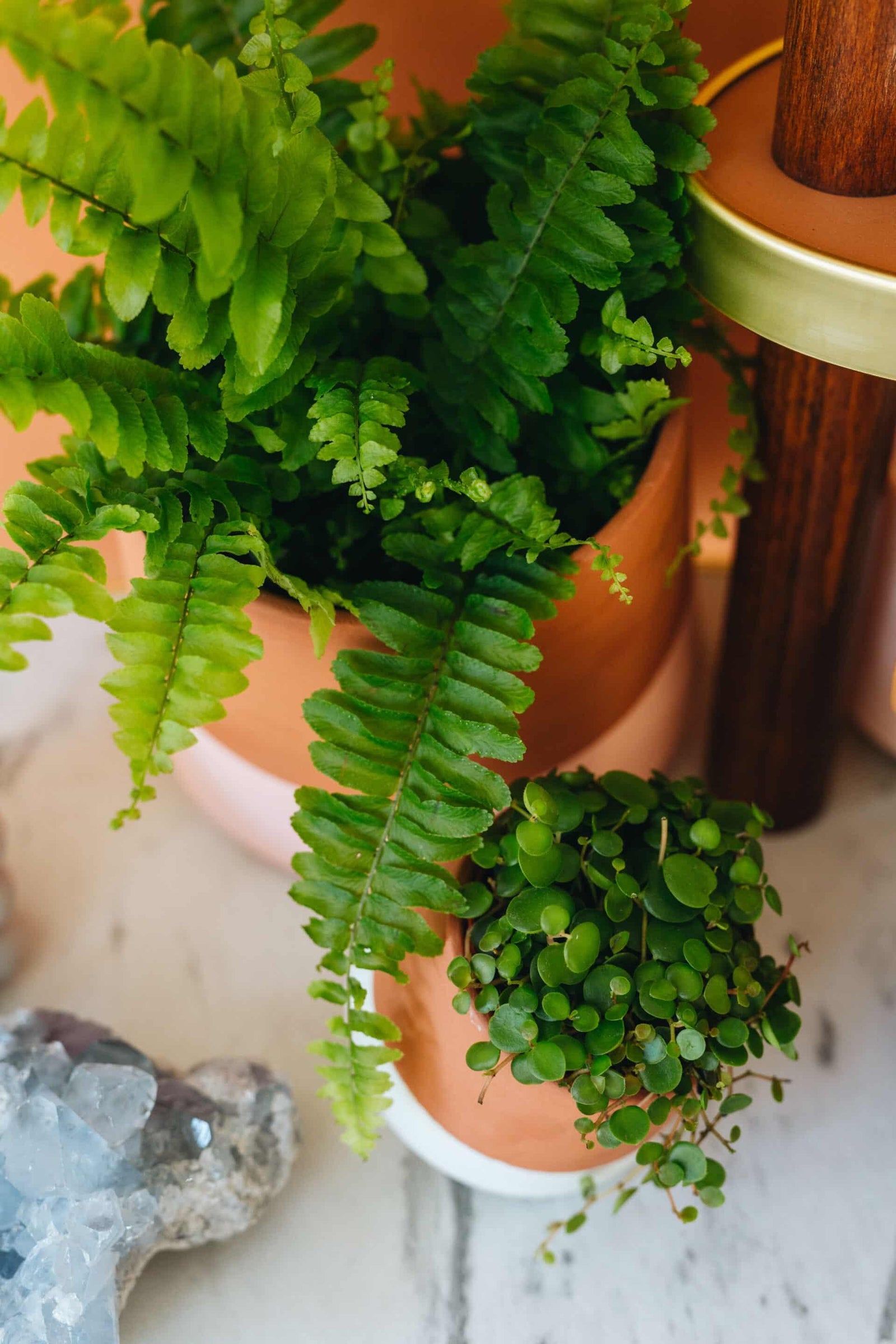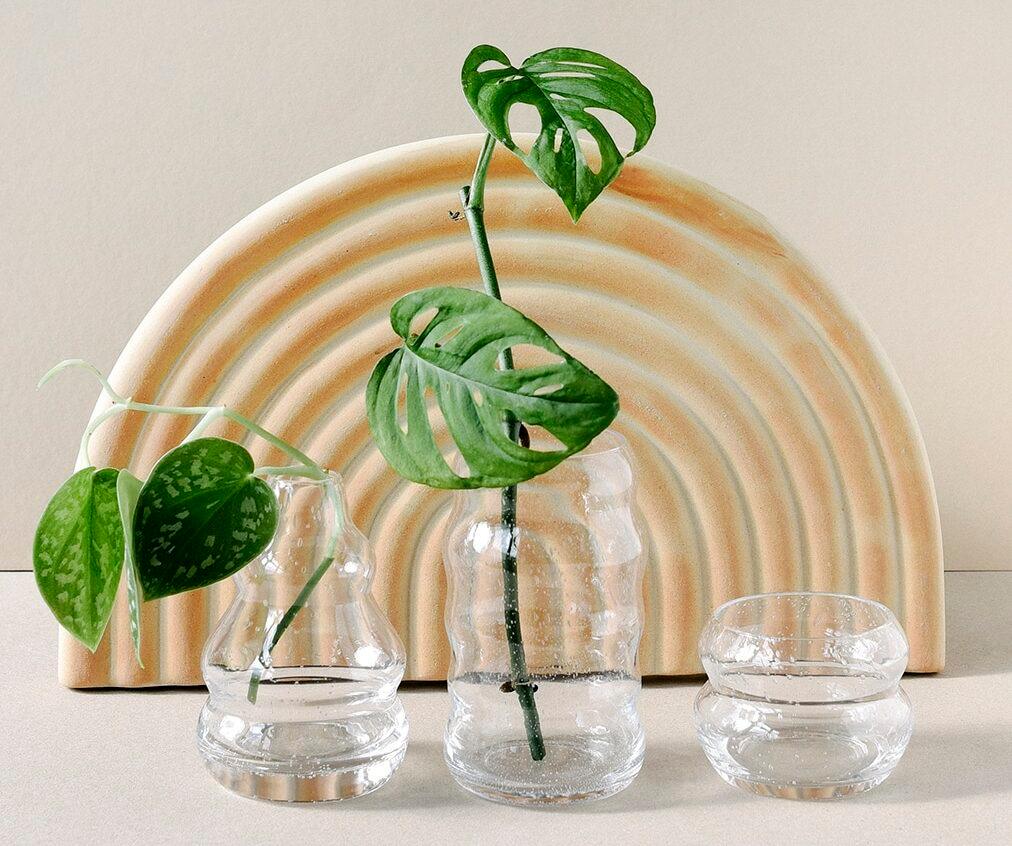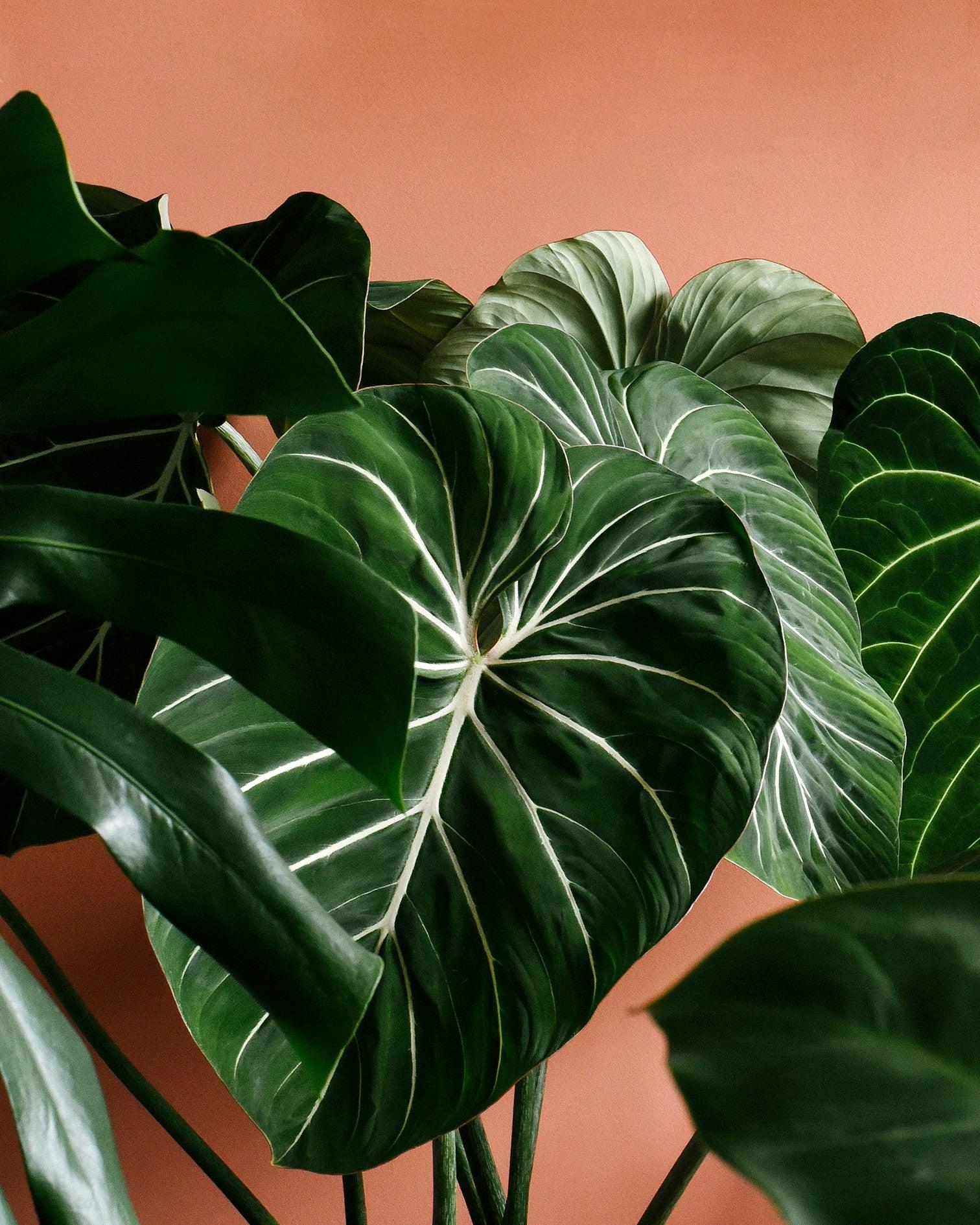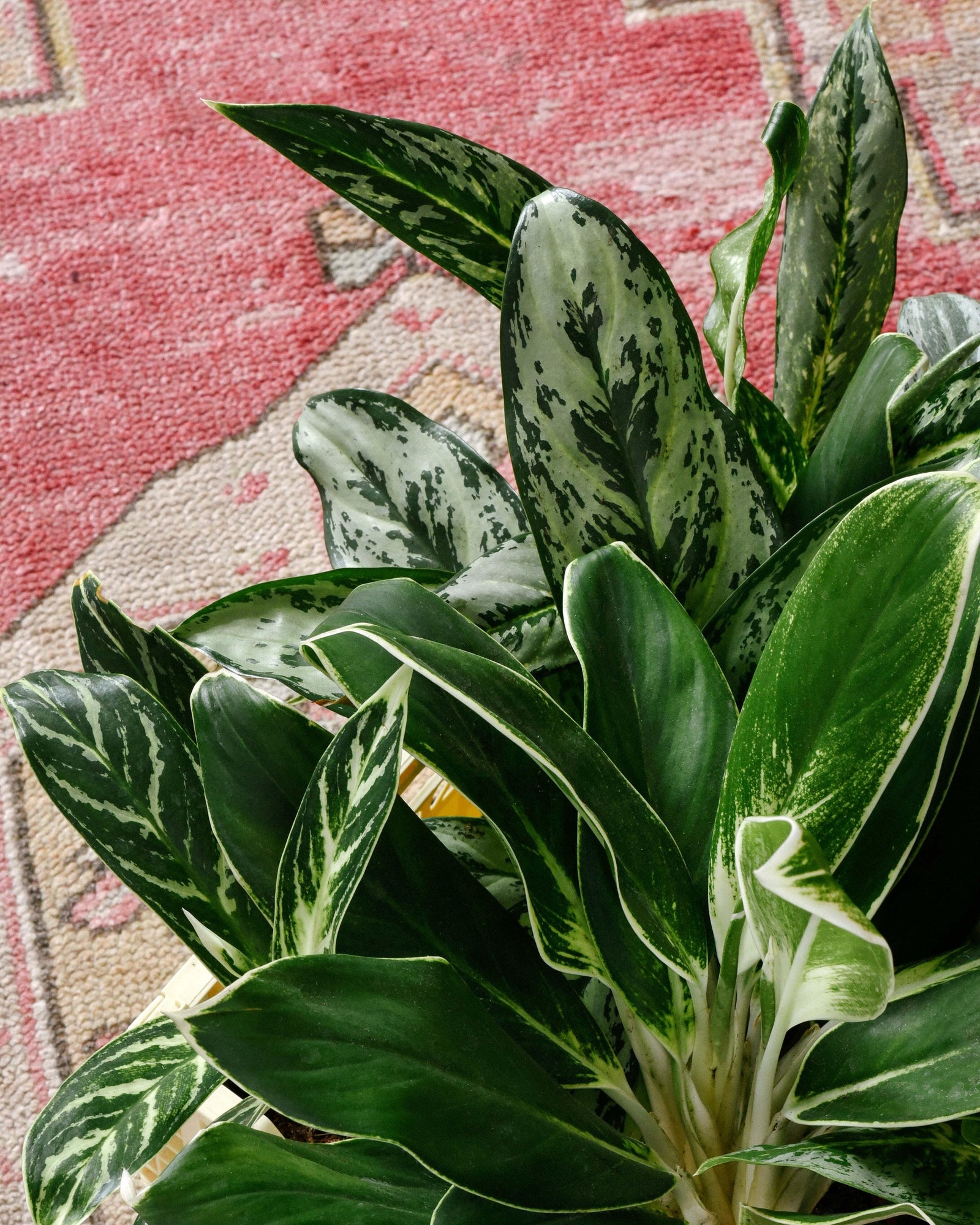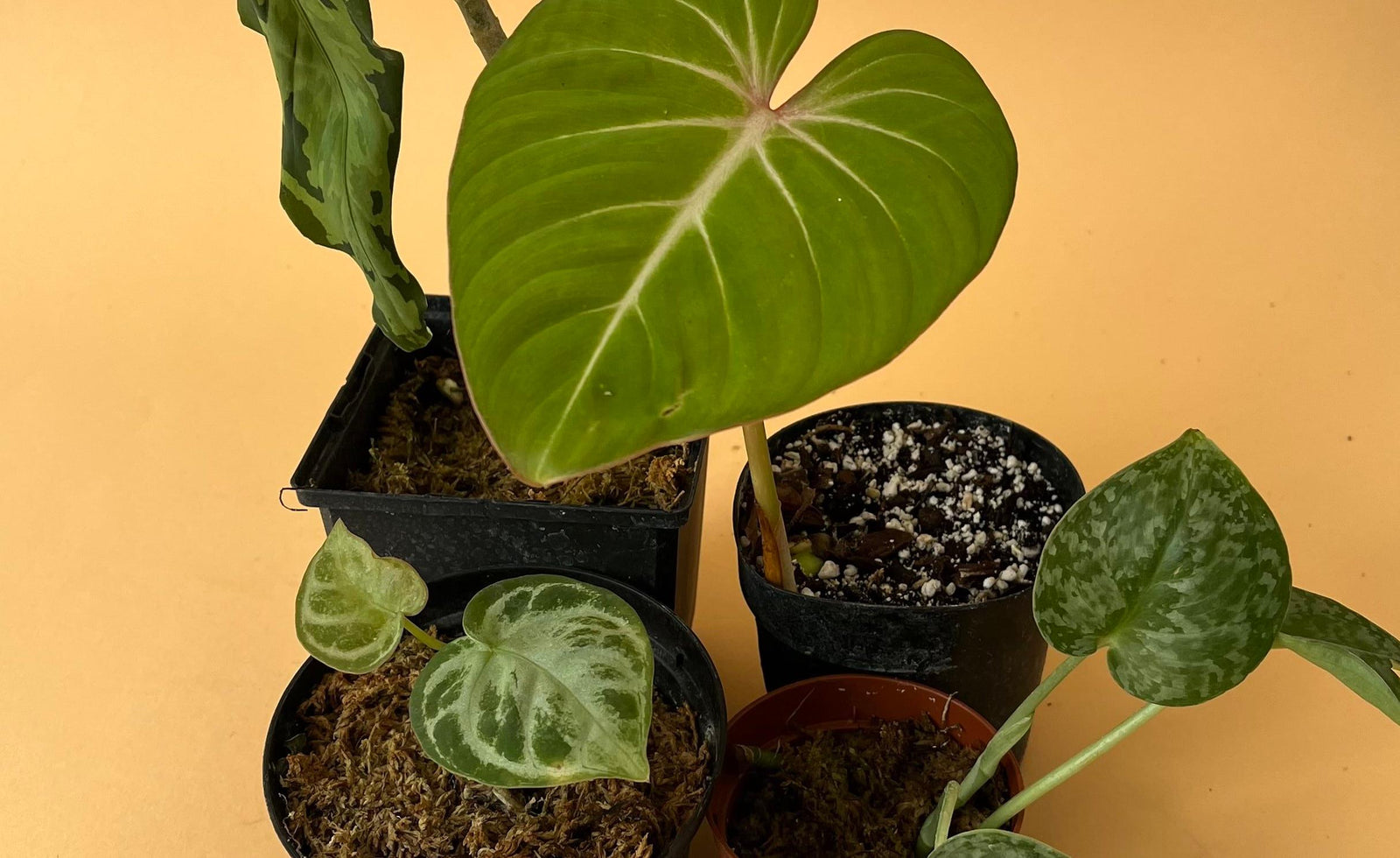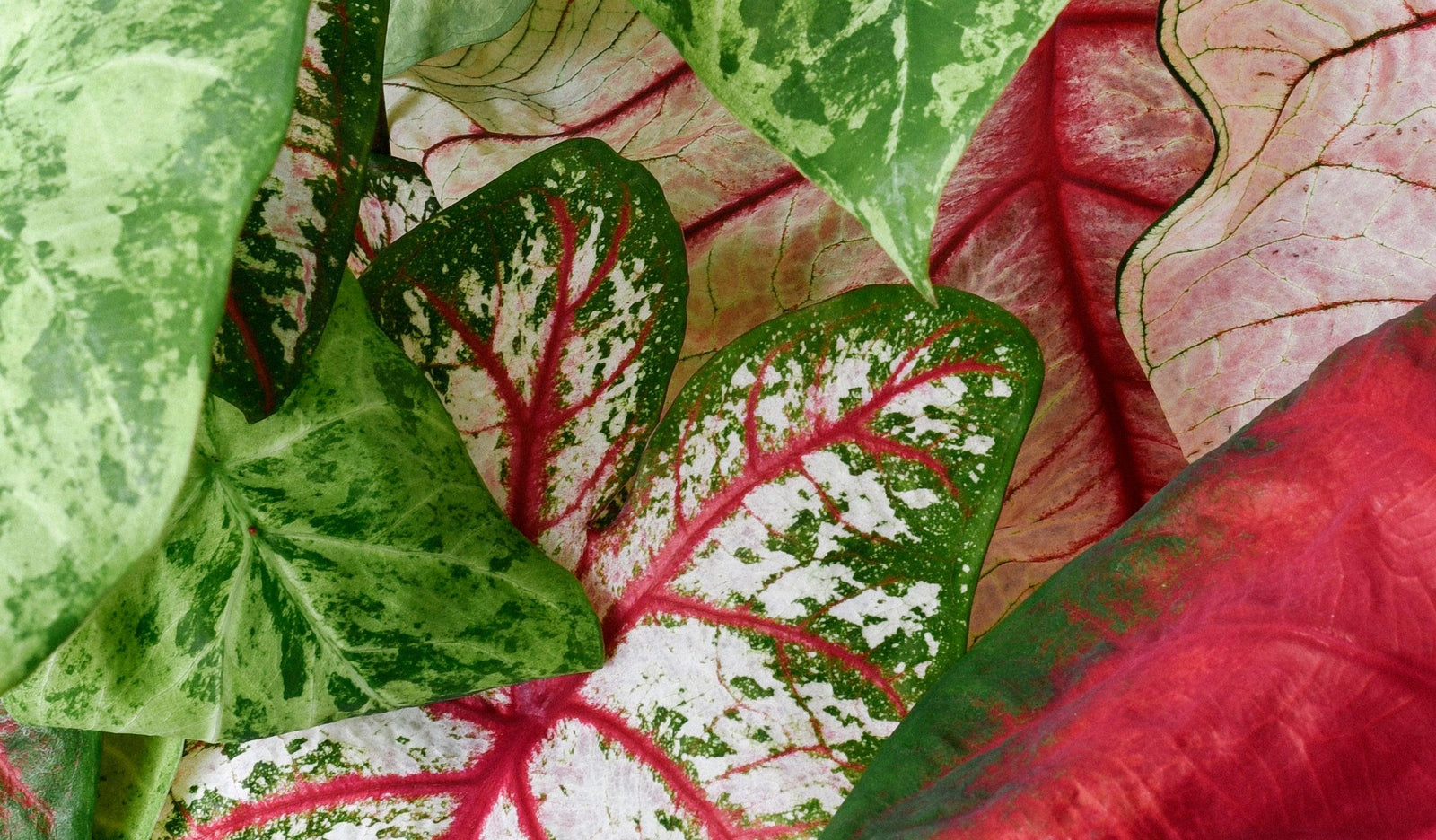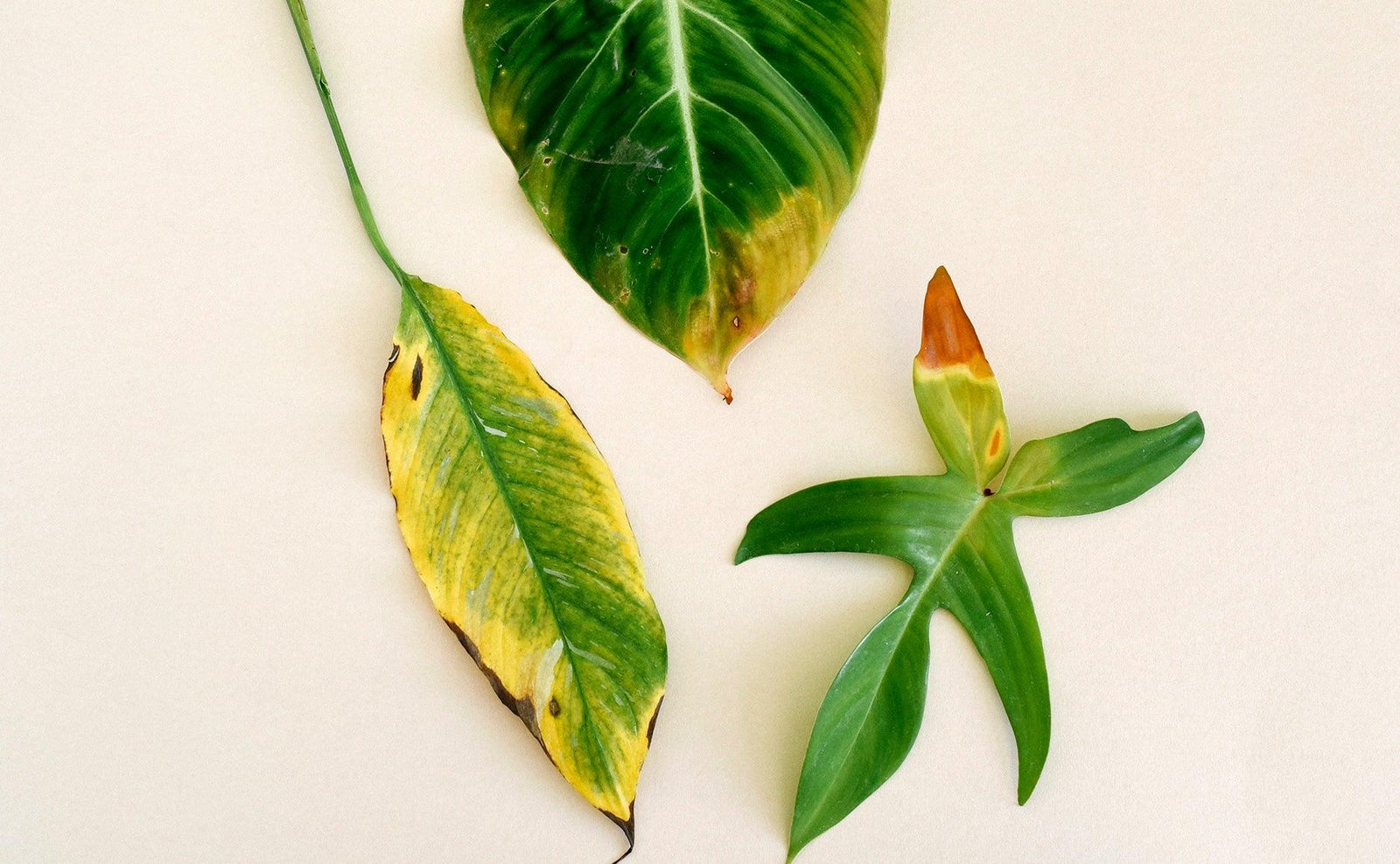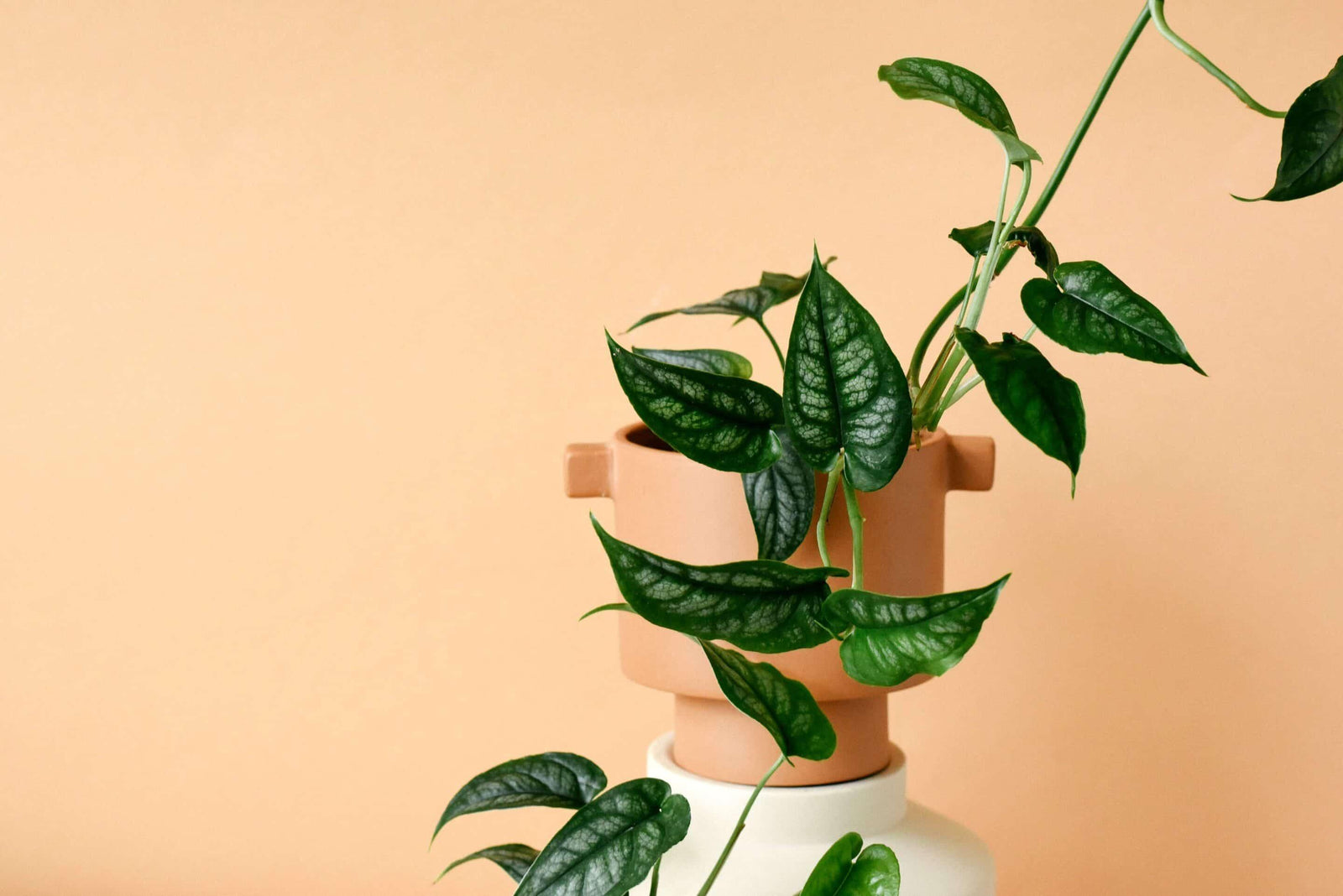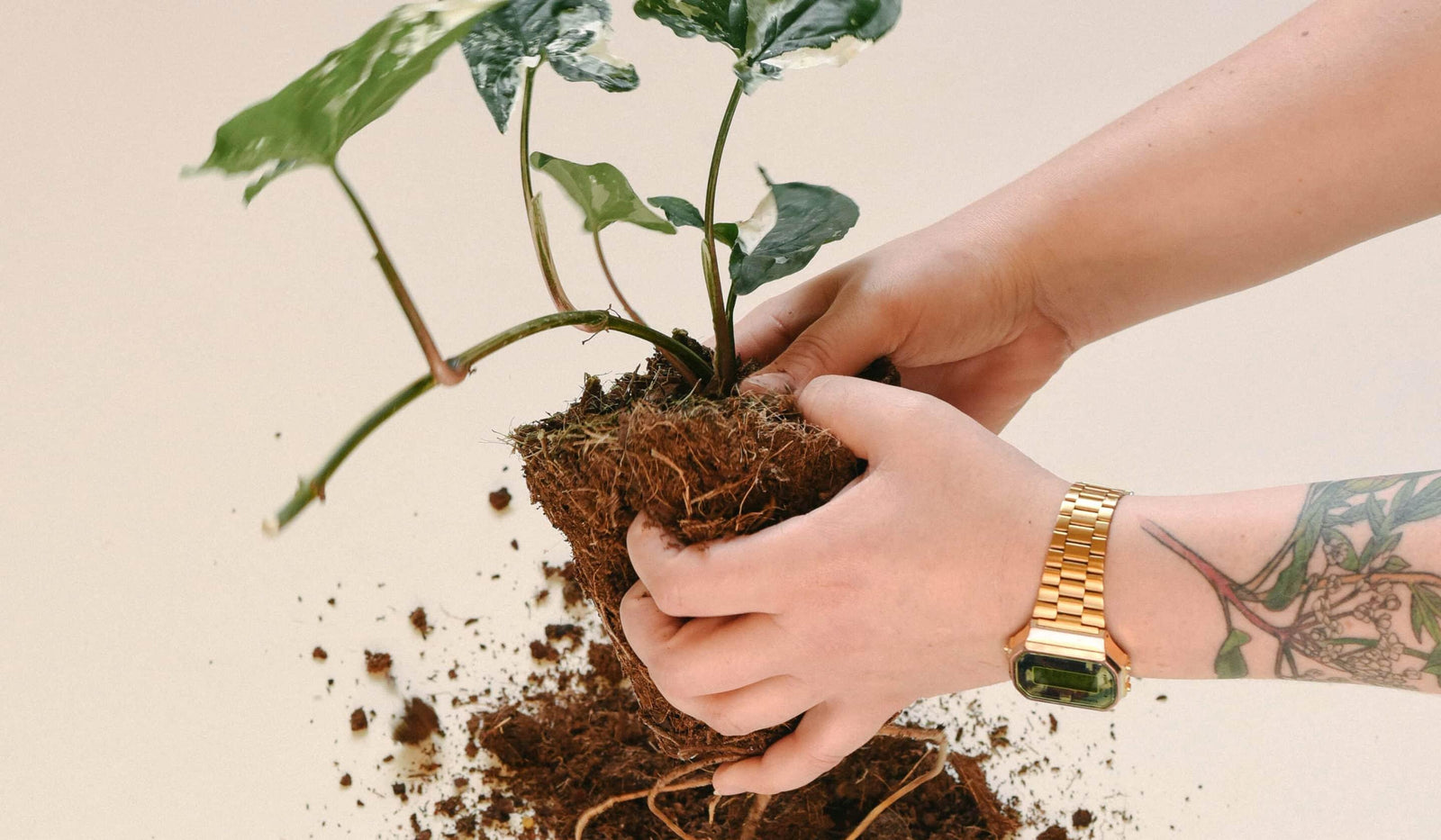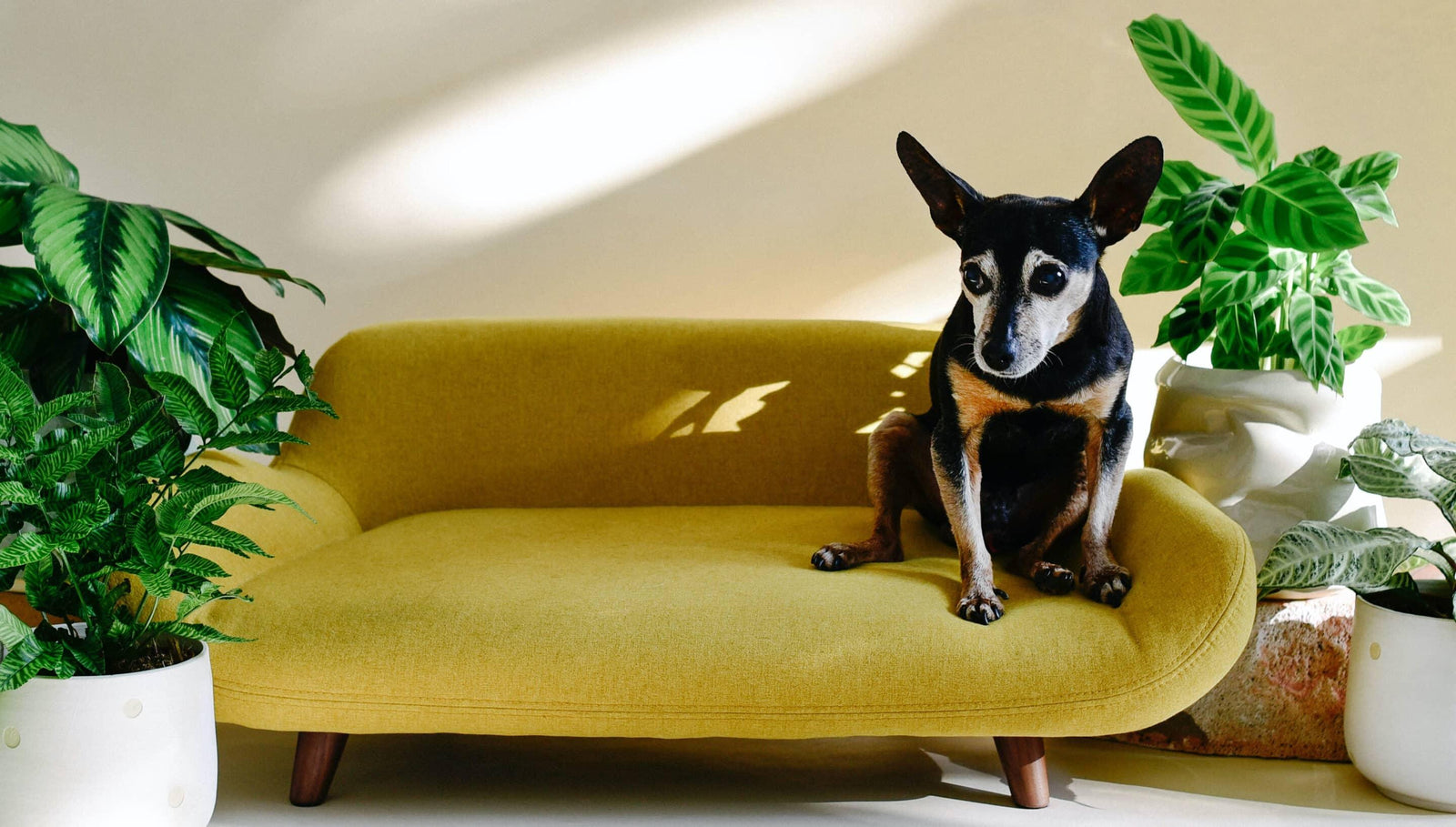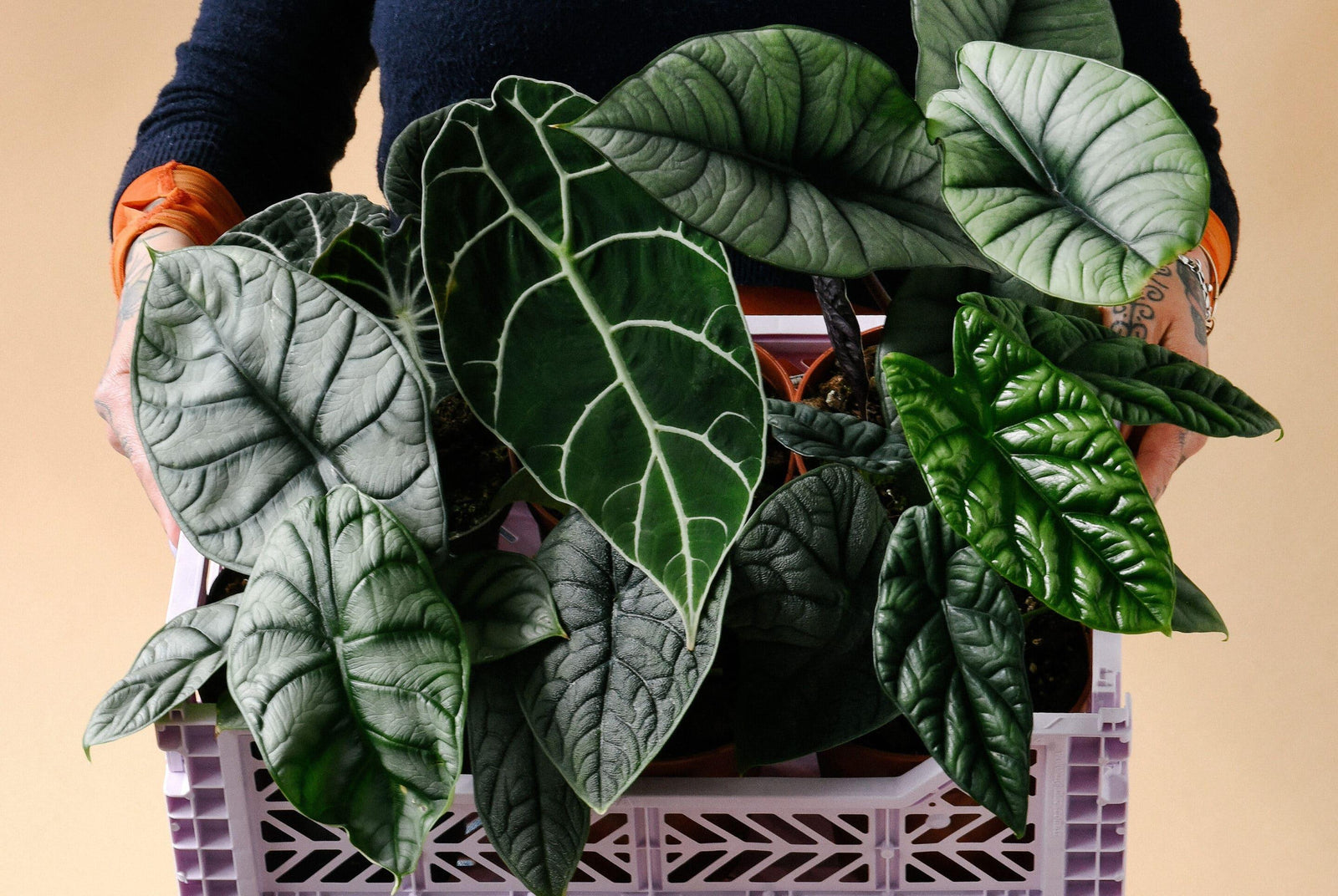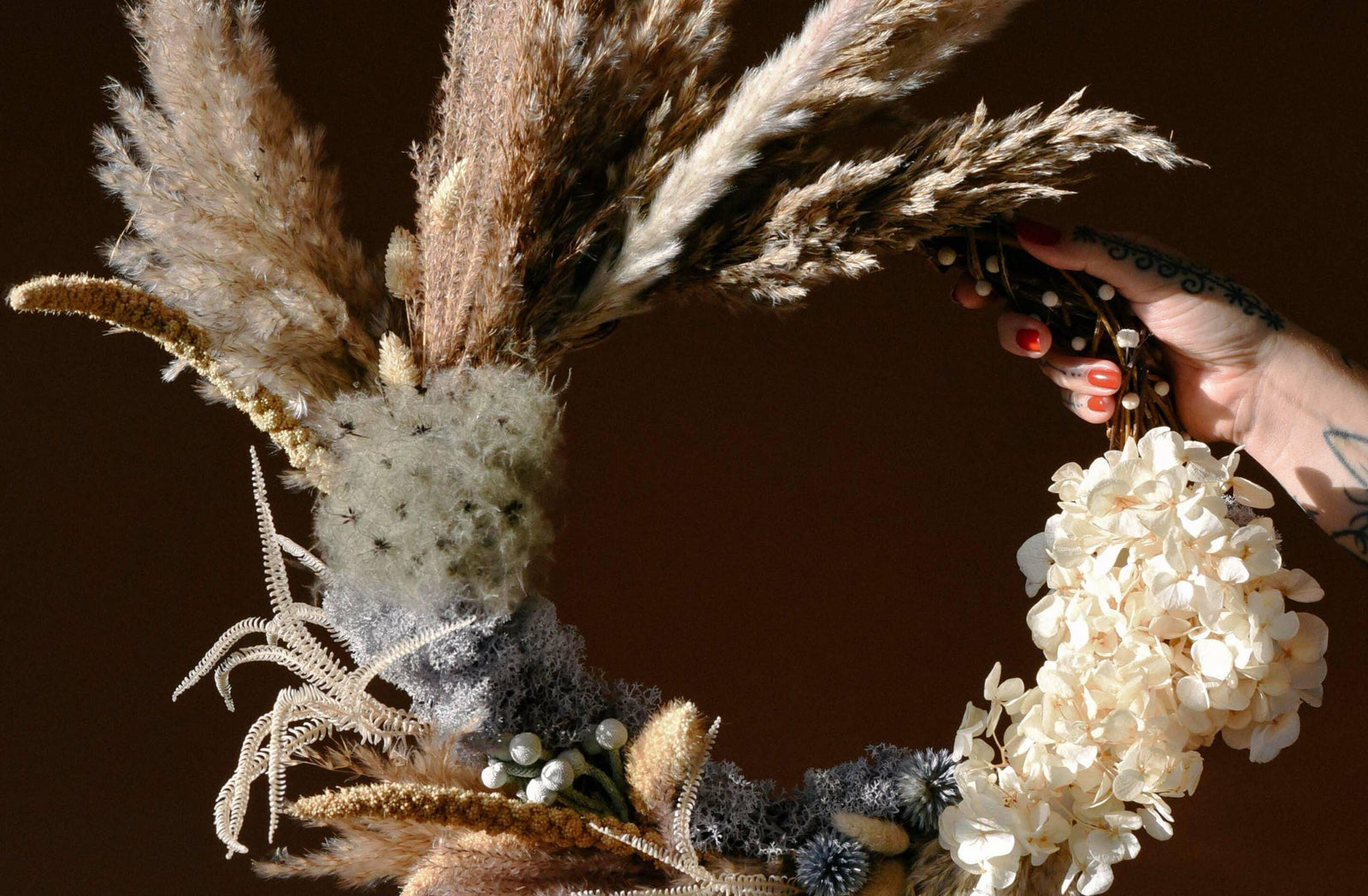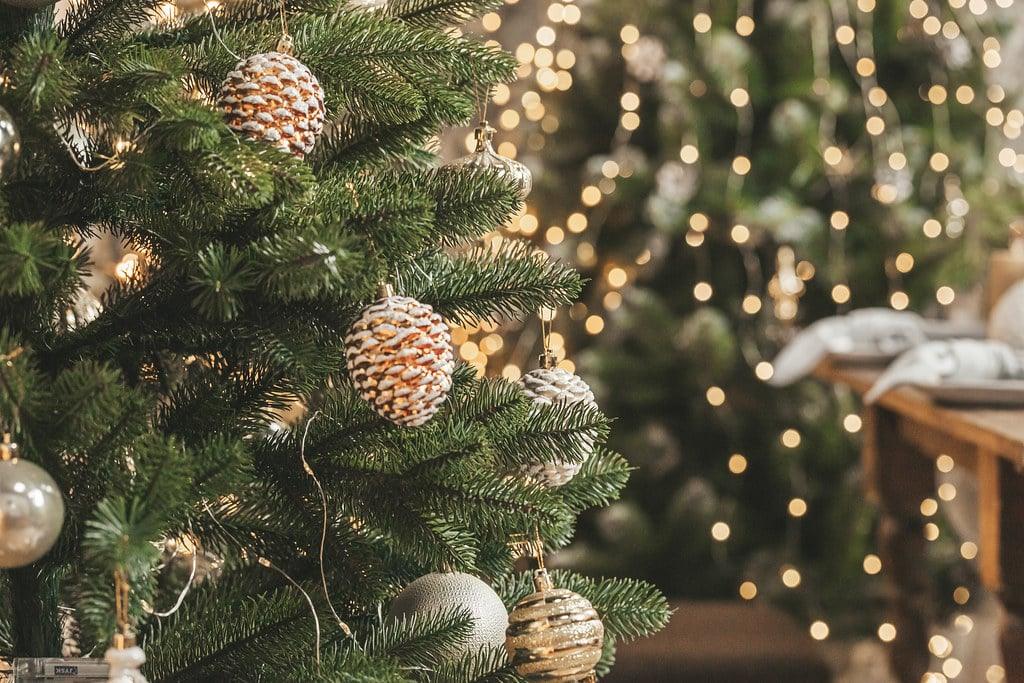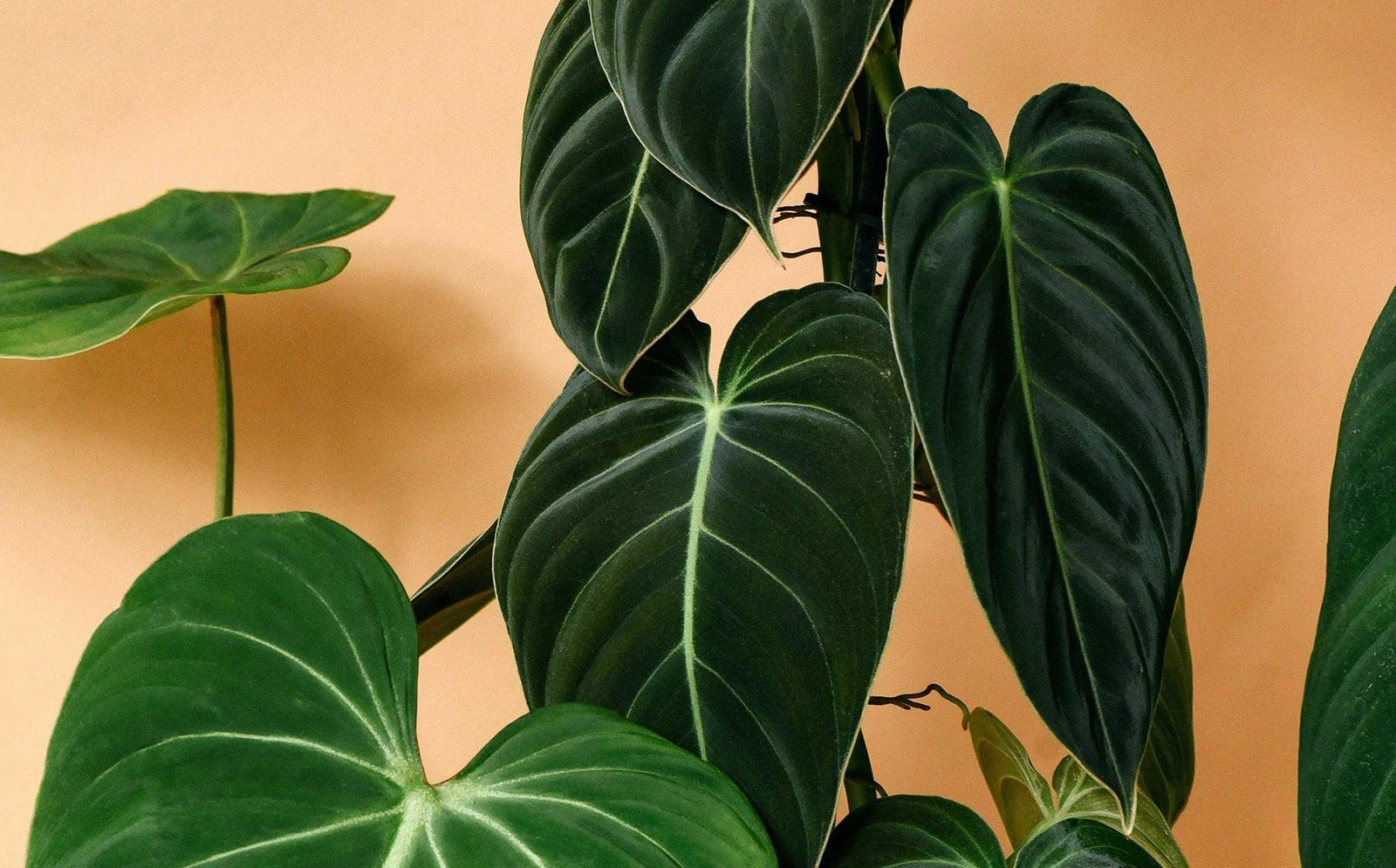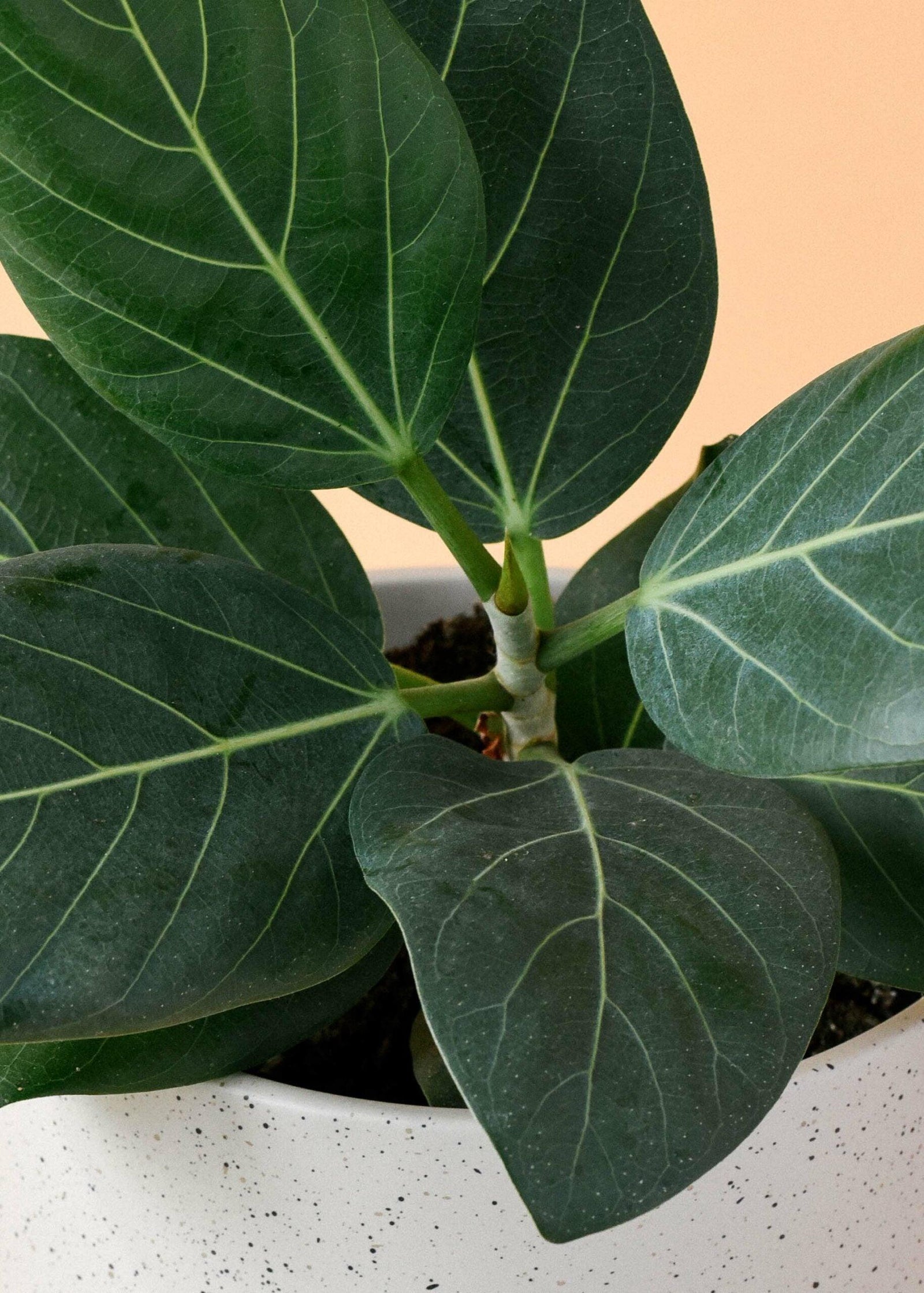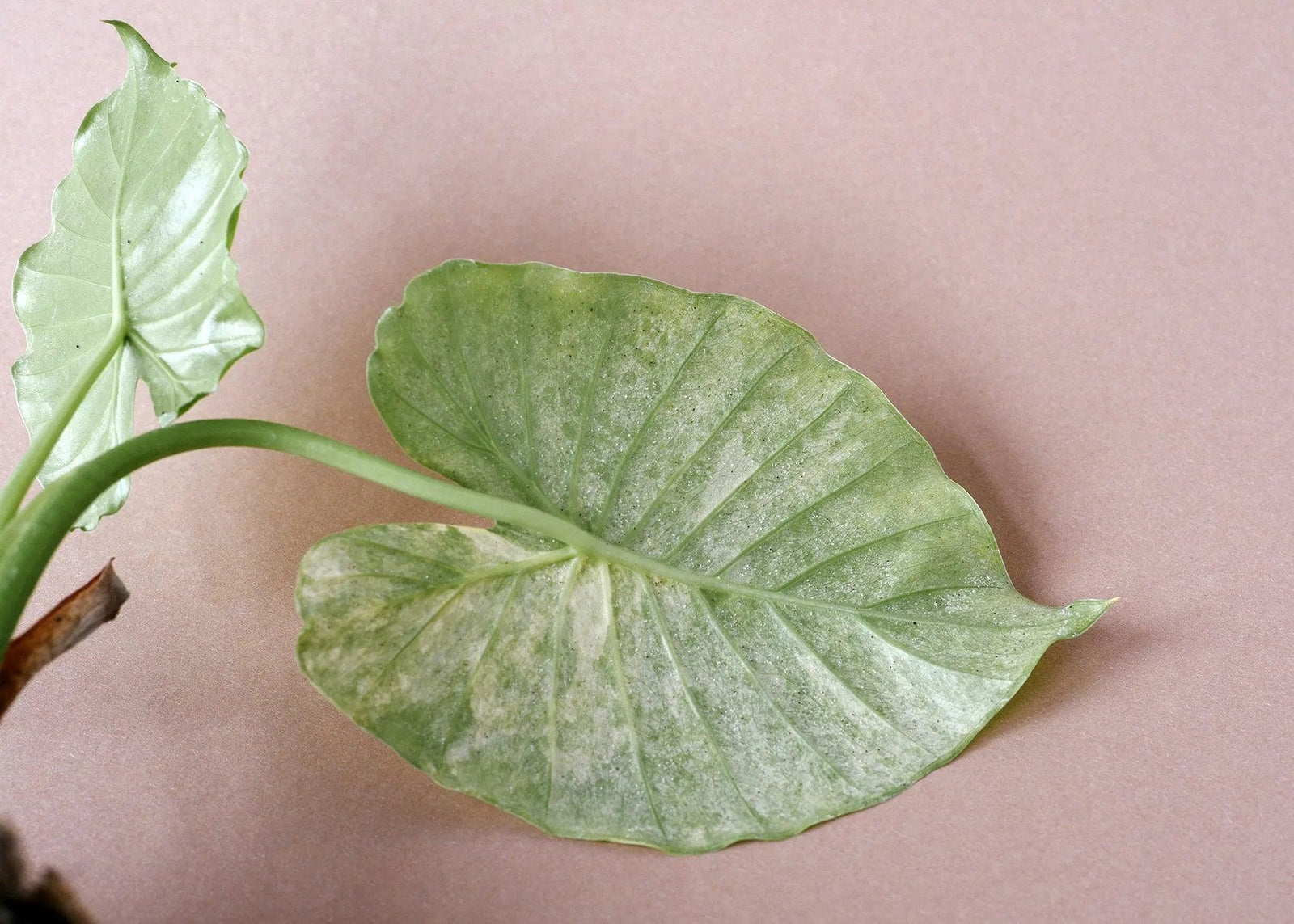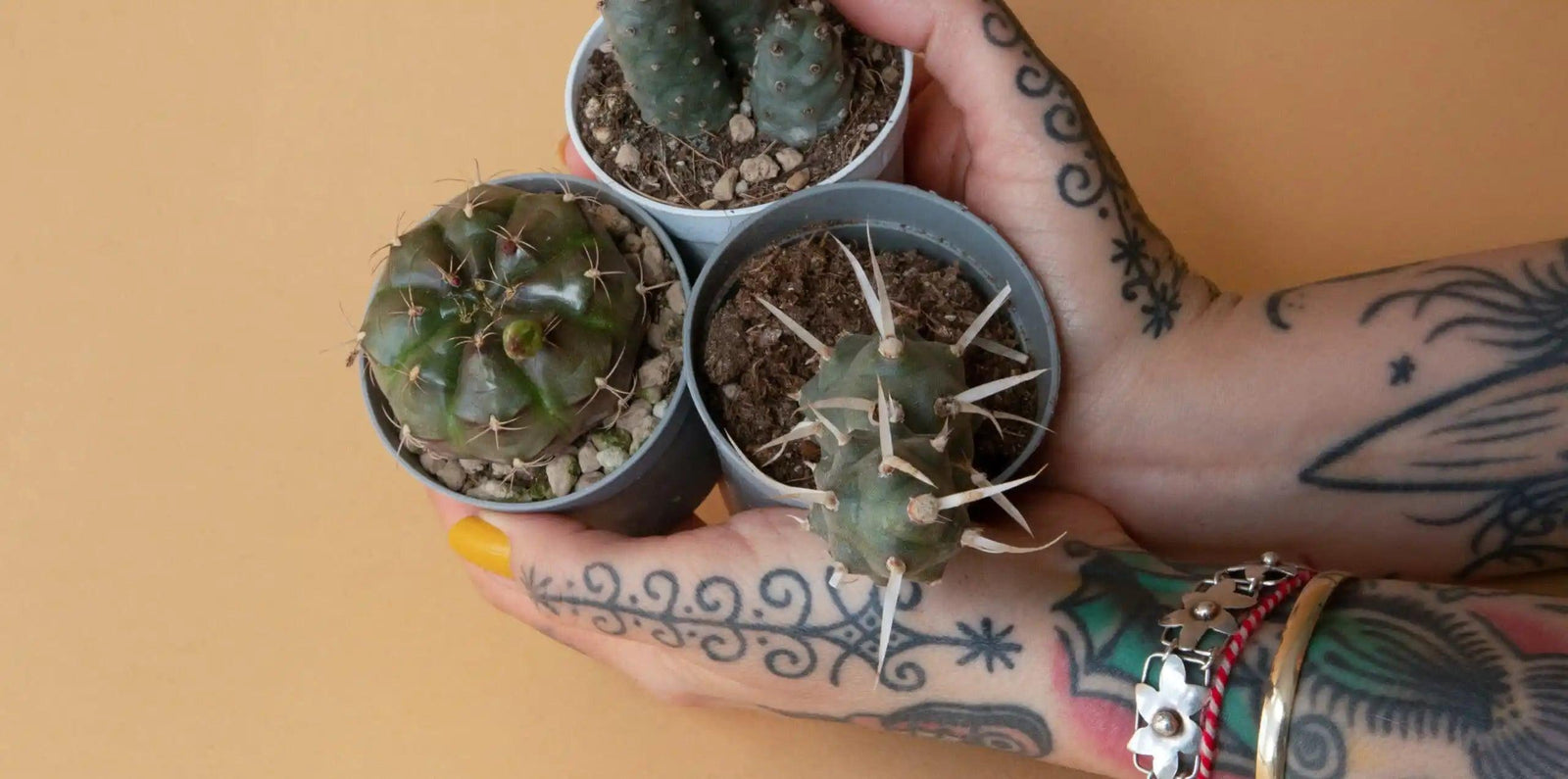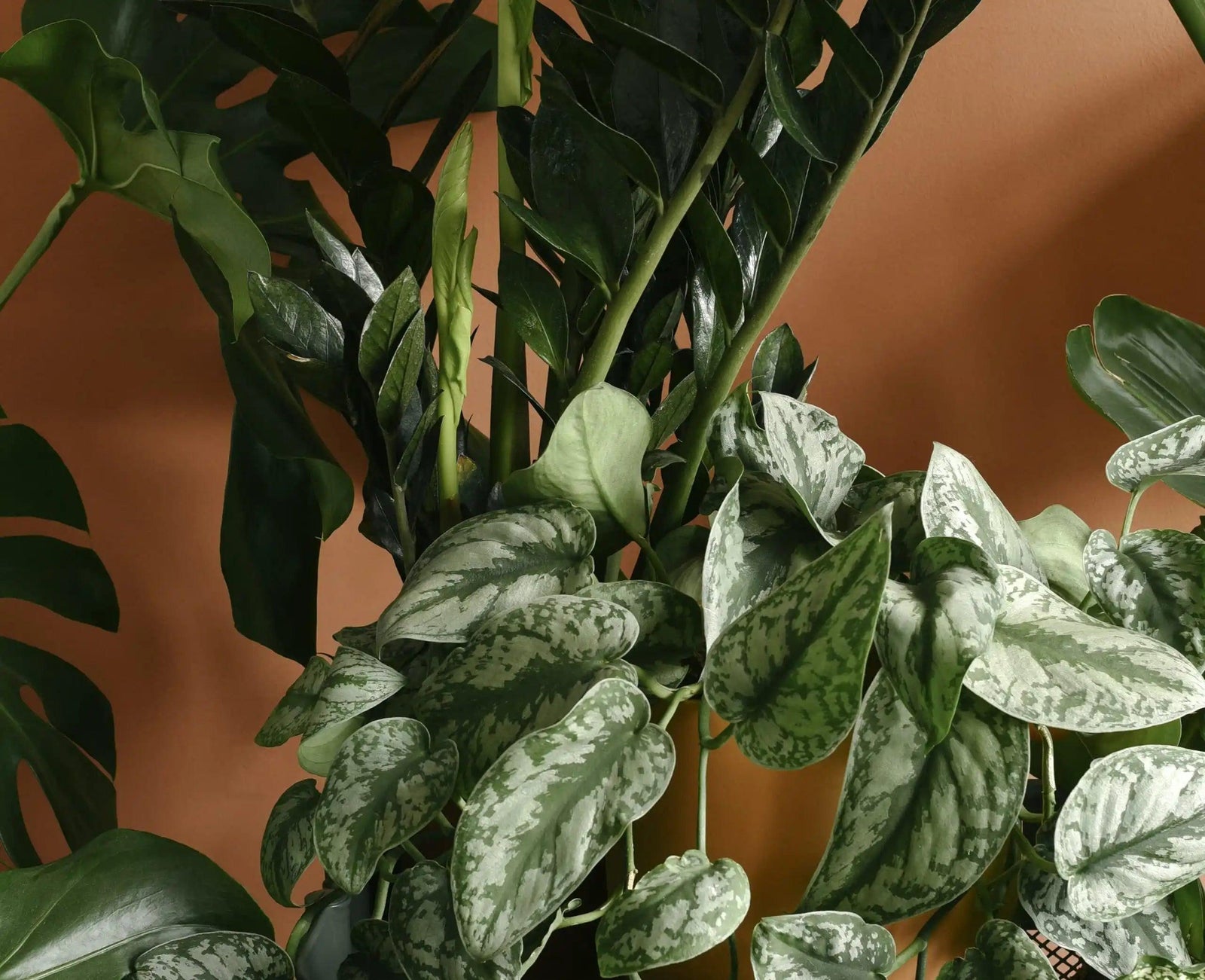Thrips. The word alone sends chills down the spine of any plant parent, an with good reason, because thrips are probably one of the worst pests you can find on your plants! They are hard to get rid of, and they can transmit viruses. And to make things worse, they can be difficult to identify! But fear not, we’ll teach you all about identification, treatment, and prevention!
The symptoms of thrips are often confused with either over watering, due to yellow and brown spots on the leaves, or extrafloral nectaries, due to the tiny dots on the leaves.
So how can you tell that you’re dealing with thrips and none of the above?
The first signs of a pest infection presents itself when a new leaf on the plant doesn’t want to unfurl, the growth of the plant is stunted, tiny dots appear on the leaves, or yellow and brown spots start appearing, looking similar to those of an overwatered plant.
As soon as you see any of the aforementioned symptoms, it’s time to inspect the undersides of the leaves closely and carefully for any signs of bugs. Thrips are tiny, slender bugs that are only few mm long, so they can be quite hard to detect!
The thrips larvae is white, while adults are black in colour. They suck on plants, which causes plenty of damage in itself, however the worst part may be that they can transfer viruses from plant to plant. How do they do that?
Not only do adult thrips have wings and are able to fly, but the fact that most people keep their plants standing close together, and often touching, makes it almost too easy for thrips to cross over to their next victim.
So once you spot tiny, slender bugs, no wider than sewing needle, on the underside of the leaf, and those bugs move once you carefully poke them with a fingernail, you know you are dealing with thrips and it’s time to get to work, ASAP!
First you’ll want to get rid of as many of them as possible. You can do that by either using a lint roller, as suggested by House Plant Journal, or by placing your plant in the shower and using the water pressure of the shower head to thoroughly clean the leaves.
Thrips will not only always lay eggs, which you can’t really remove, but the adults will often hide in the unfurled leaves, or in the cataphyll, which in plant morphology means a reduced, small leaf.
As you can imagine, those places are far more difficult to get to, and thats why your fight against trips unfortunately doesn’t end with a shower and a lint roller.

To really get rid of thrips, we recommend that you follow the steps outlined below, and repeat them over the next four to six weeks.
Now, to be quite frank, it is both easier and faster to get rid of the unwanted pests by using store bought pesticides. However, there are ways to do it at home in a much less invasive way, and we tend to prefers those, so if you do as well, read on!
After you have carefully showered, or lint rolled, your plant, spray it with a mixture of Neem oil and castile soap, measuring about 1 tbsp of neem oil and 1 tbsp of castile soap to 1 liter of warm water. Read more about this mixture, and the benefits of using neem oil in this blog post!
Apply your mixture to all parts of plants with a spray bottle, particularly focusing on the underside of the leaves. Neem oil has a rather distinct odour, so we suggest you open a window when you use it to immediately air the room! It could also be a good idea to apply the Neem spray while the plant is still in the bathroom, as the mixture will get the plant quite wet.
Once the plant is sprayed, it’s time to put it in quarantine! The infected plant should be separated from other plants, ideally standing alone in a room with a window.
At this time, you’ll need to check your other plants for pests too. Even if none of them have thrips at first glance, we strongly recommend spraying them too, or maybe even getting some beneficial bugs as a preventative measure against any pests still hanging around your home. Beneficial bugs for treatment of thrips include Amblyseius Californicus which also work well against spider mites, and Chrysoperla Carneo, also known as lacewings.
Neem oil leaves a film on the leaves of the plant, so remember to rinse the leaves again a couple of weeks after the treatment, but avoid washing the leaves until you have already the introduced beneficial bugs. Neem oil can kill any insect by smothering or suffocating them, but pests will die from ingesting the treated leaves.
The beneficial bugs, however, don’t eat leaves and are therefore not affected by Neem, but if you spray the plant after releasing the predators, you might smother them, so it’s important do do things in the right order!
If you’d rather skip the predator bugs altogether, simply spray the plant with the Neem mixture on a weekly basis over the next four to six weeks.
You can, of course, also buy a natural pesticide based on Neem oil instead of mixing one yourself, and additionally, you can buy Neem seeds and mix them into your plants potting mix, or add them to your water while watering.
Your biggest takeaway from this should be the importance of repeating treatment for several weeks, while isolating the infected plant to make sure the bugs don’t spread to other plants. If you do this, you have a good chance of getting rid of the unwanted squatters on your plants!

Bonus tip: if you’re lucky enough to have a balcony, we also recommend planting a variety of flowers on your balcony, in order to attract beneficial insects that are natural predators to thrips. Some good predators include pirate bugs, lacewings, and ladybugs.
And last but not least, sticky traps can be helpful in capturing adult specimens.
Good luck and may your plants be ever free of pests!



